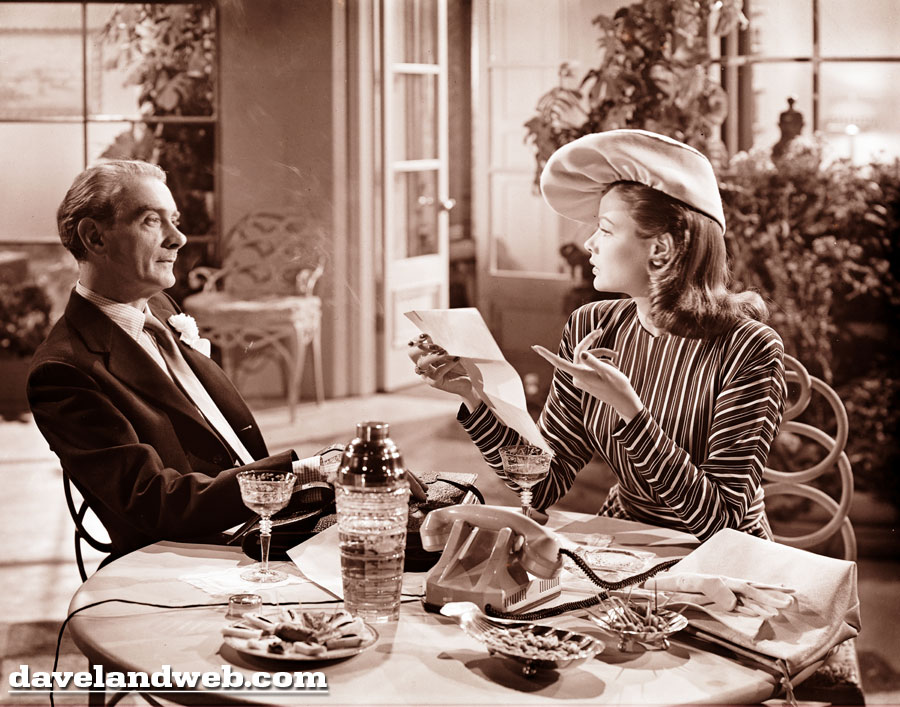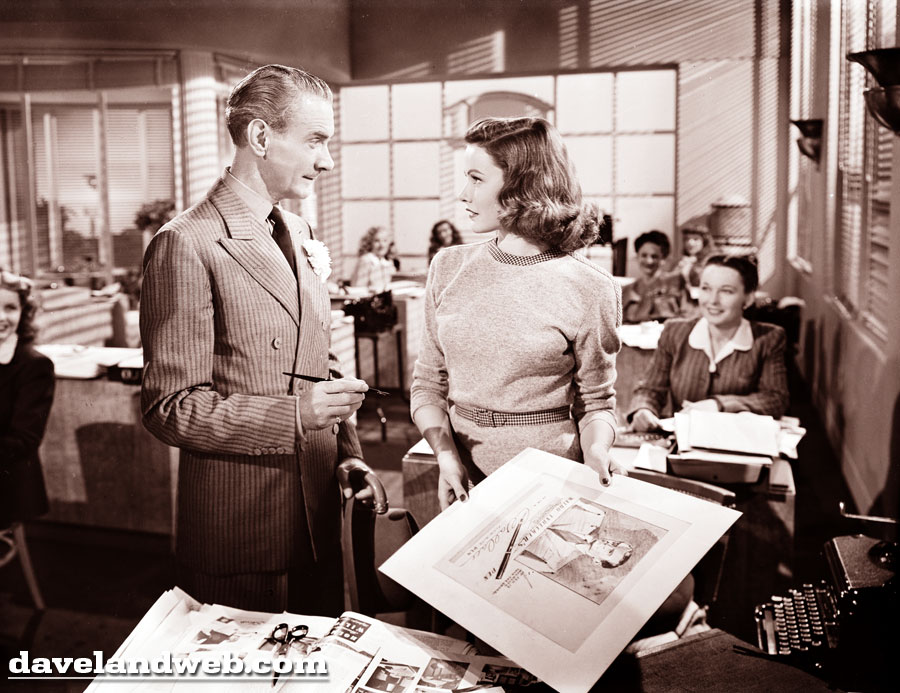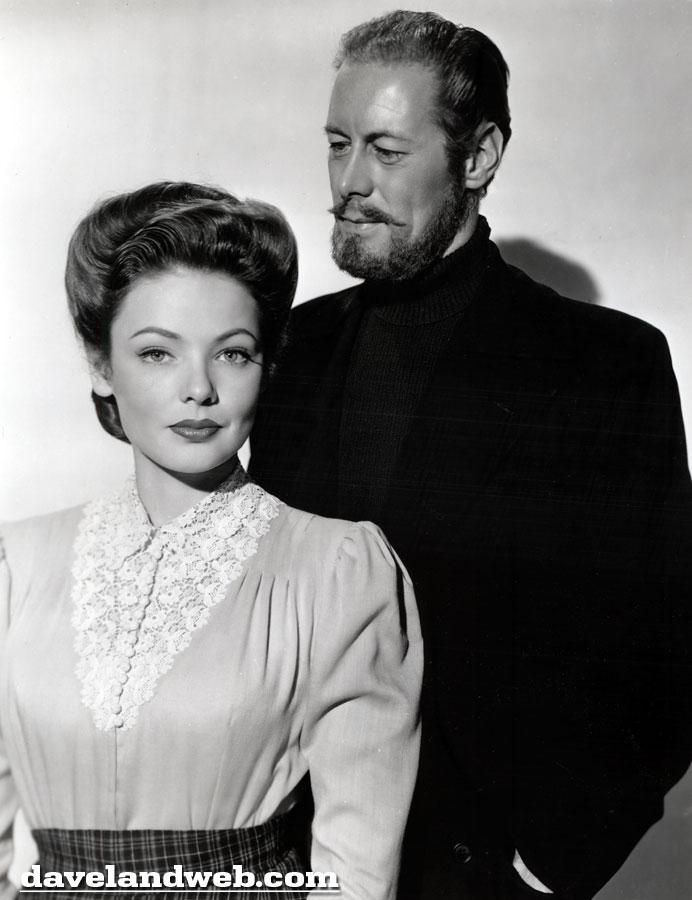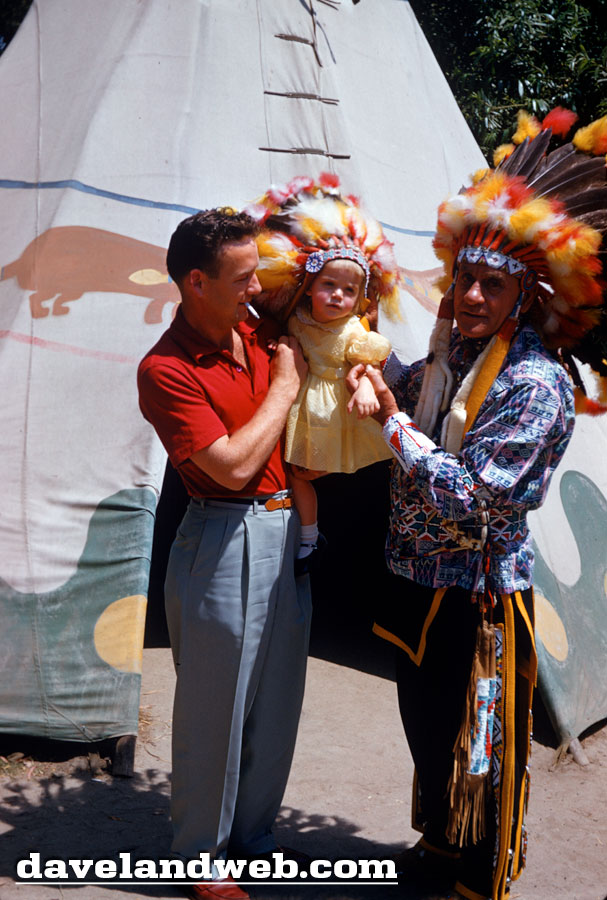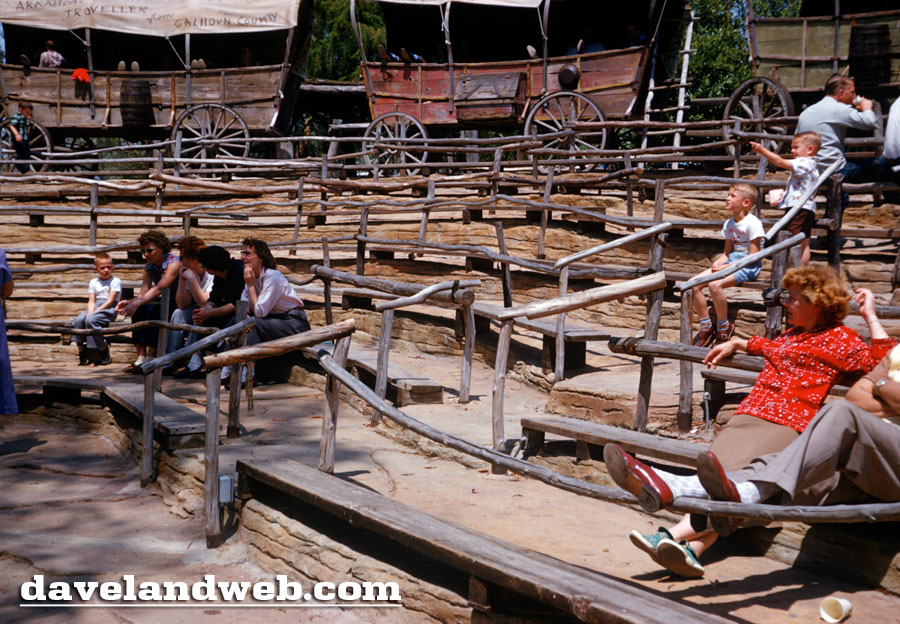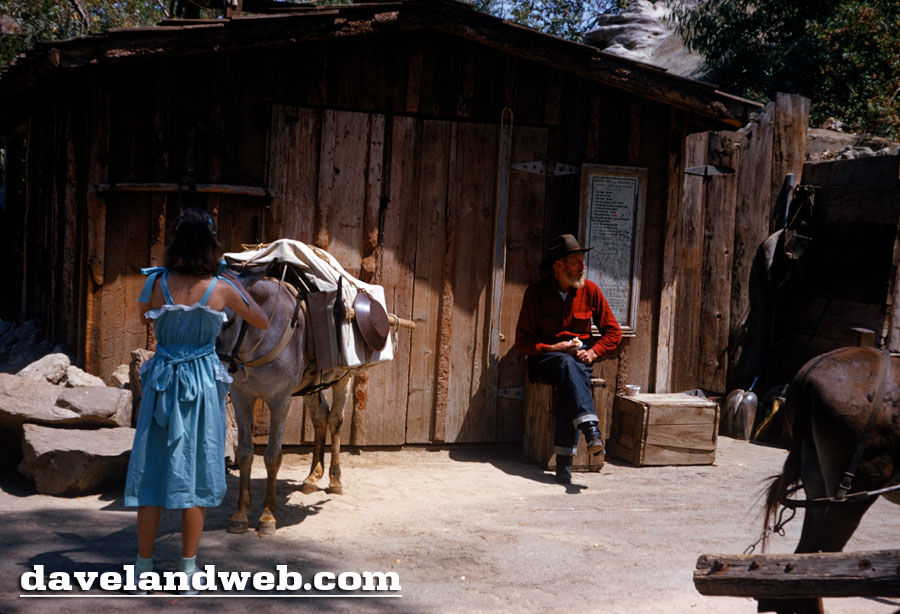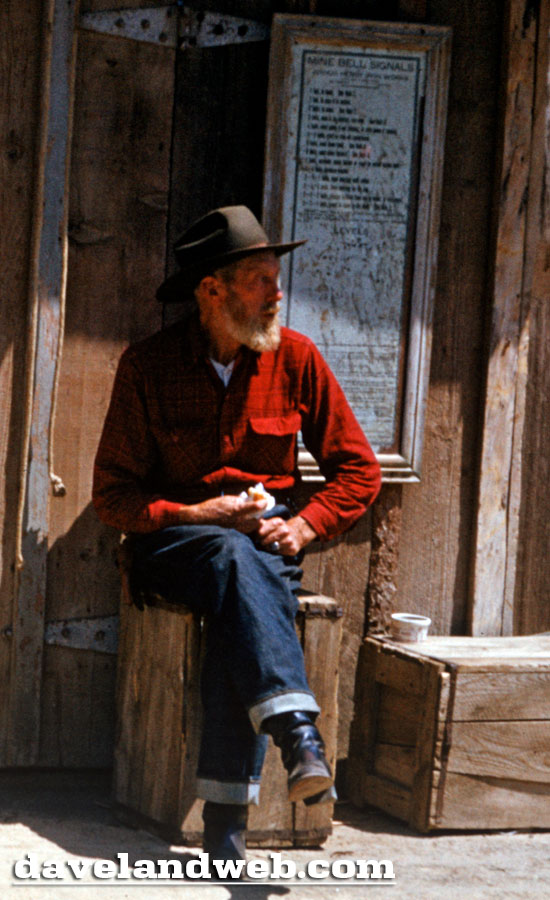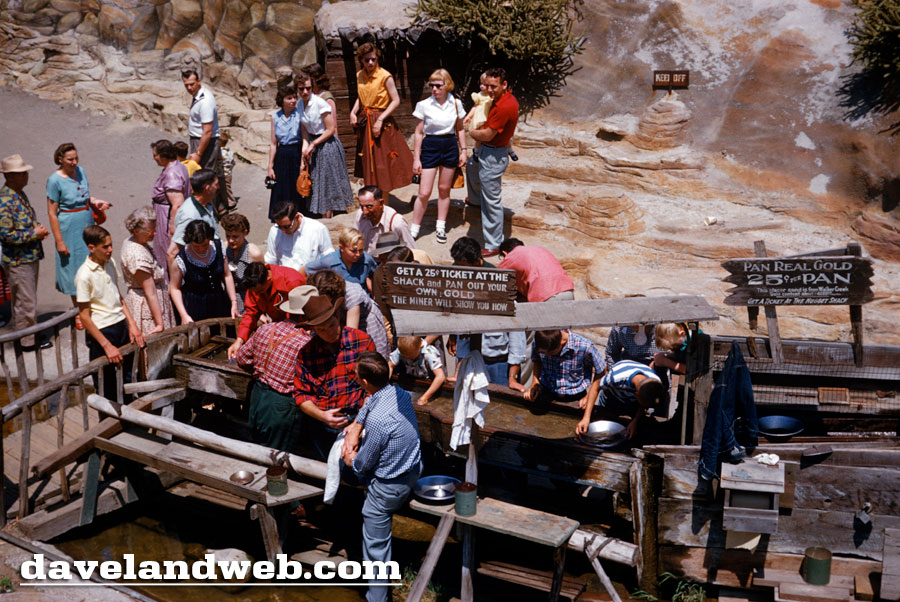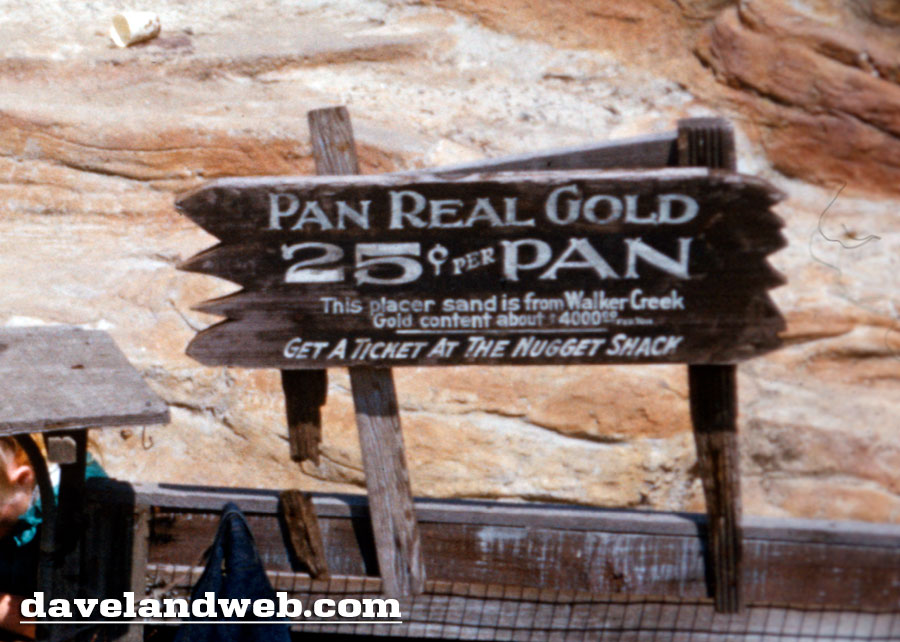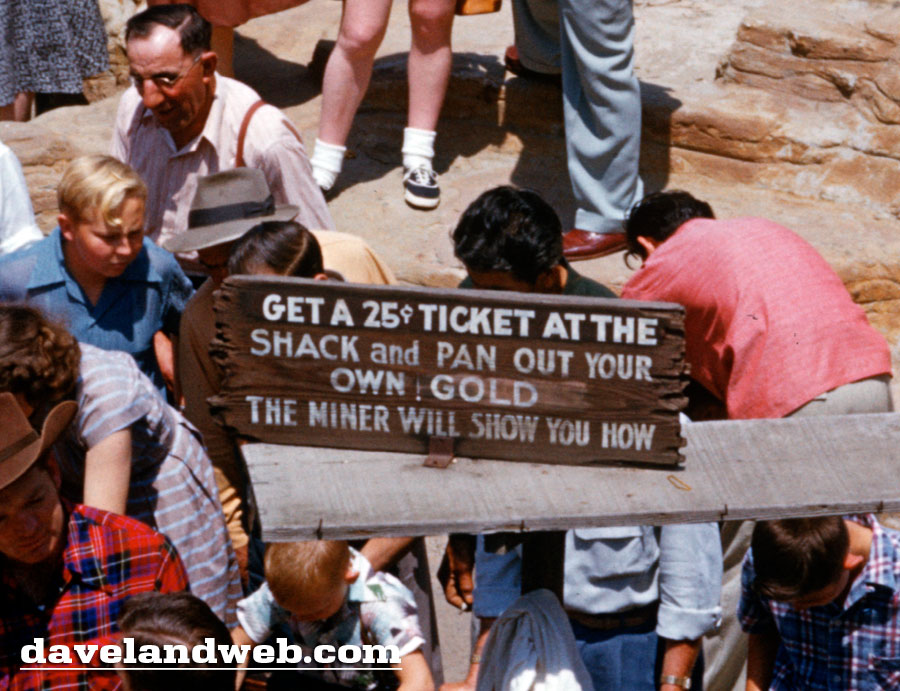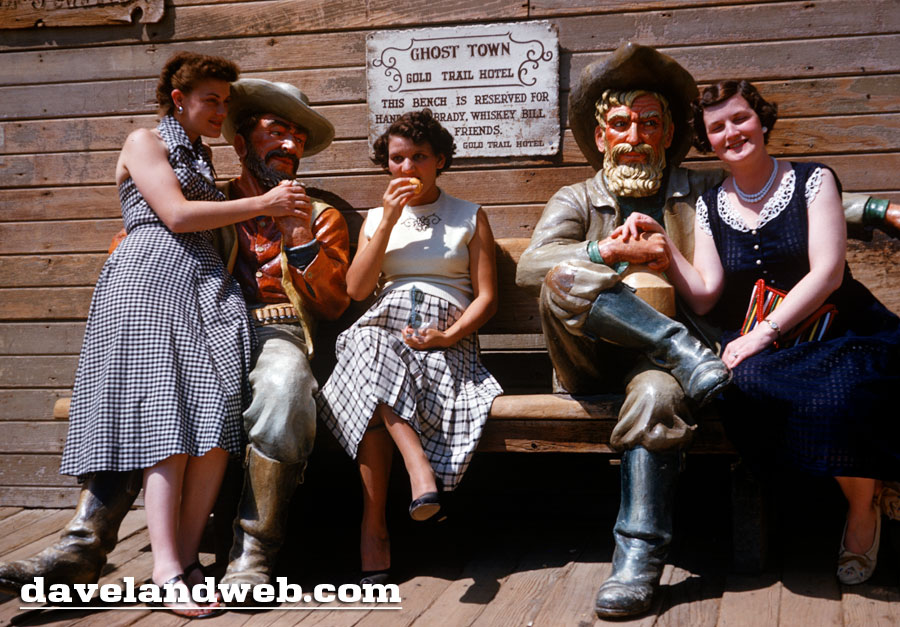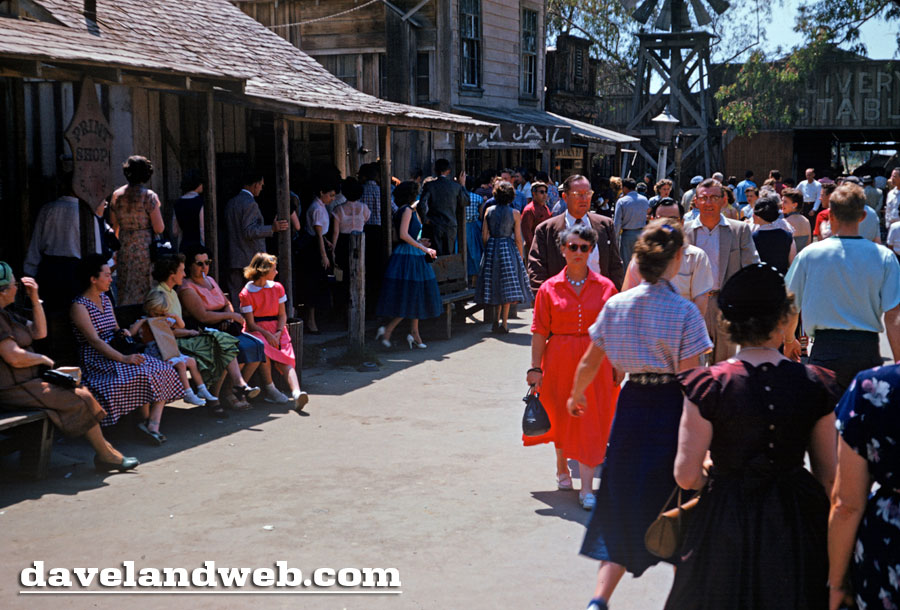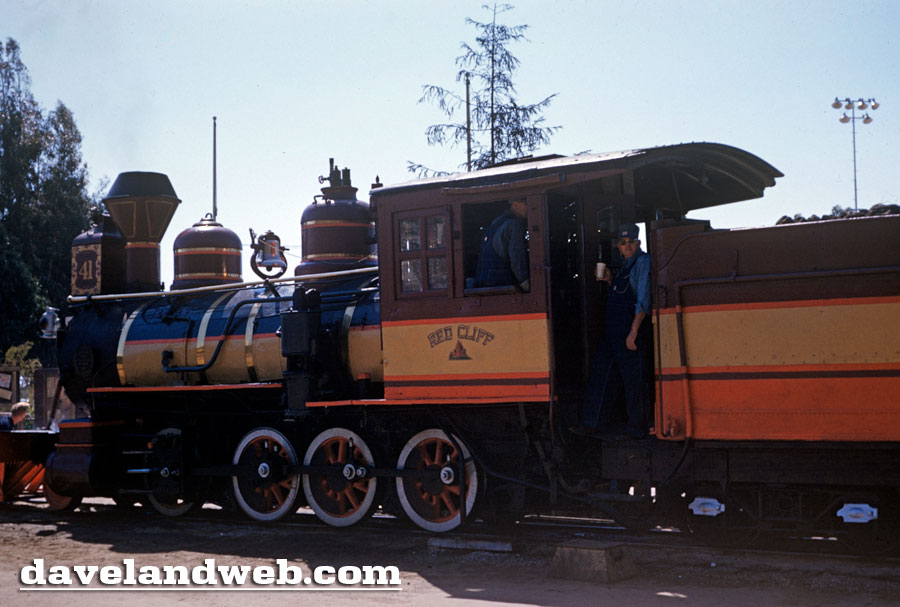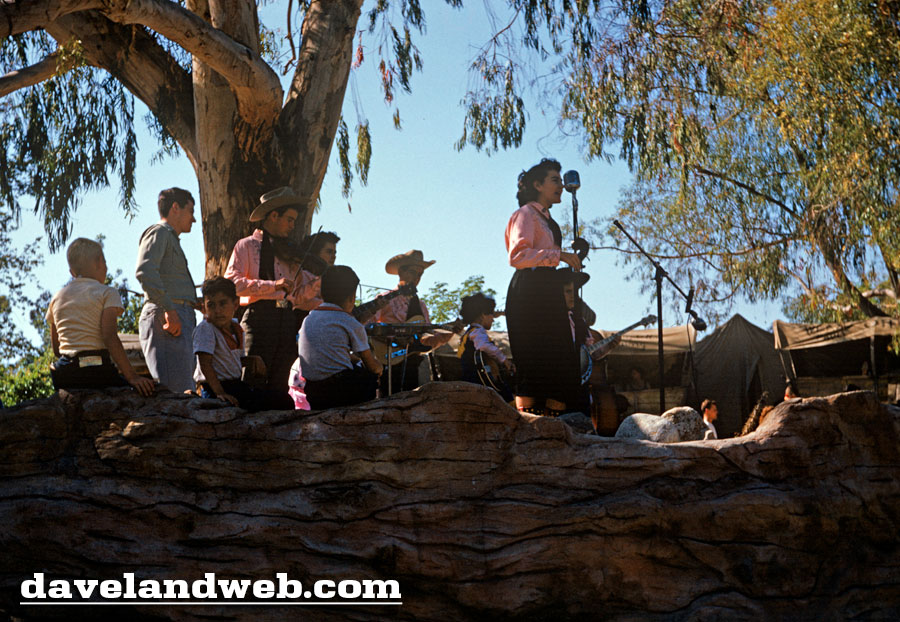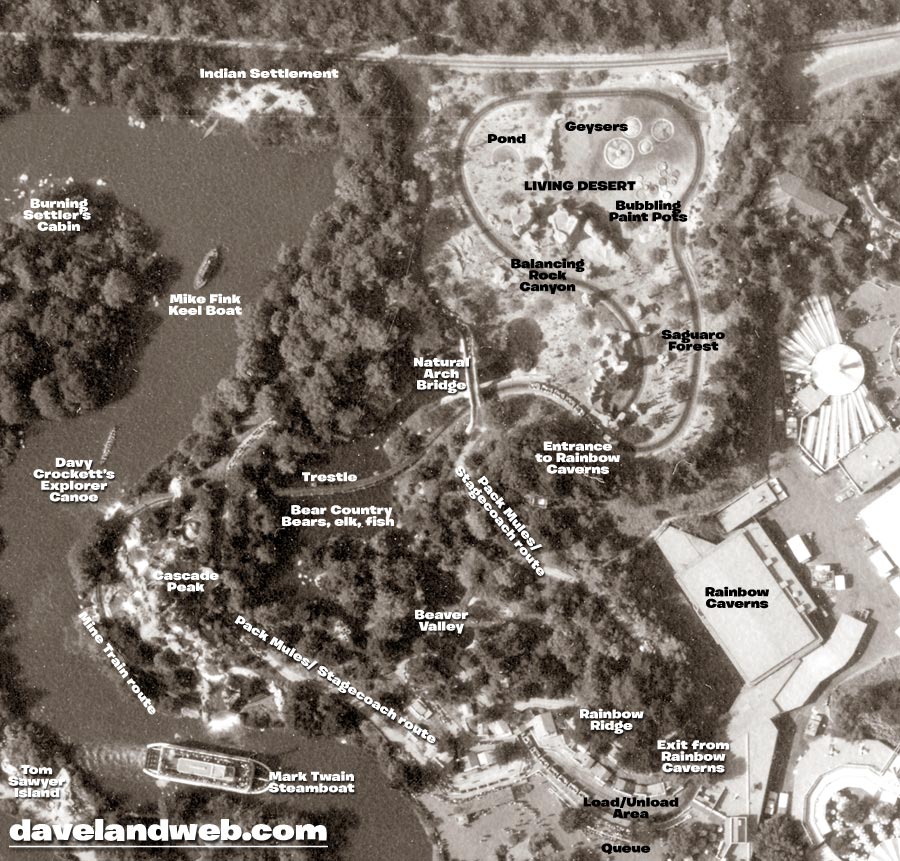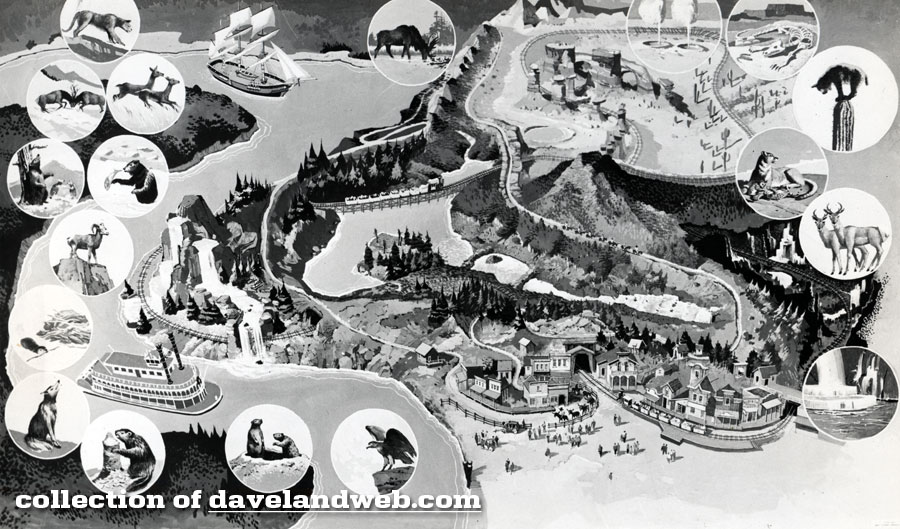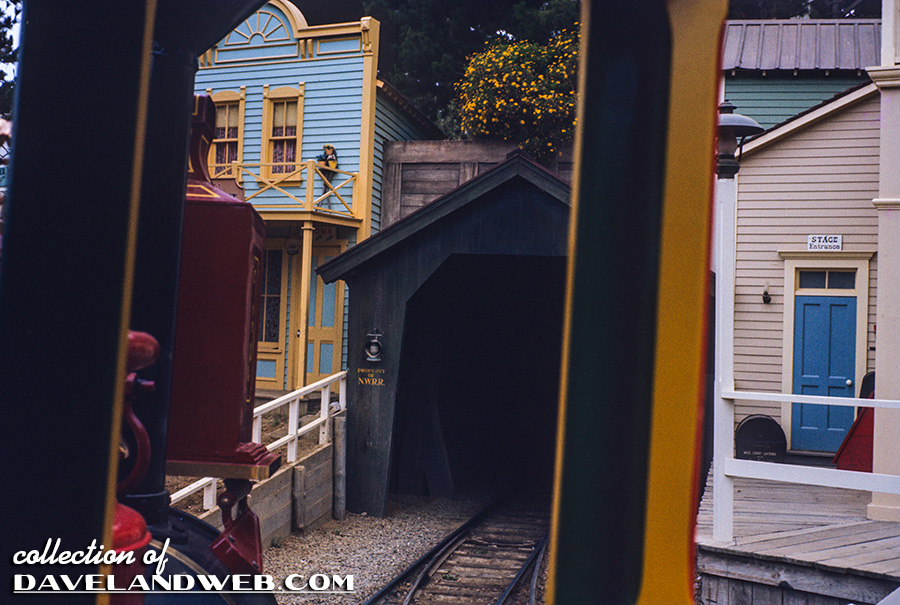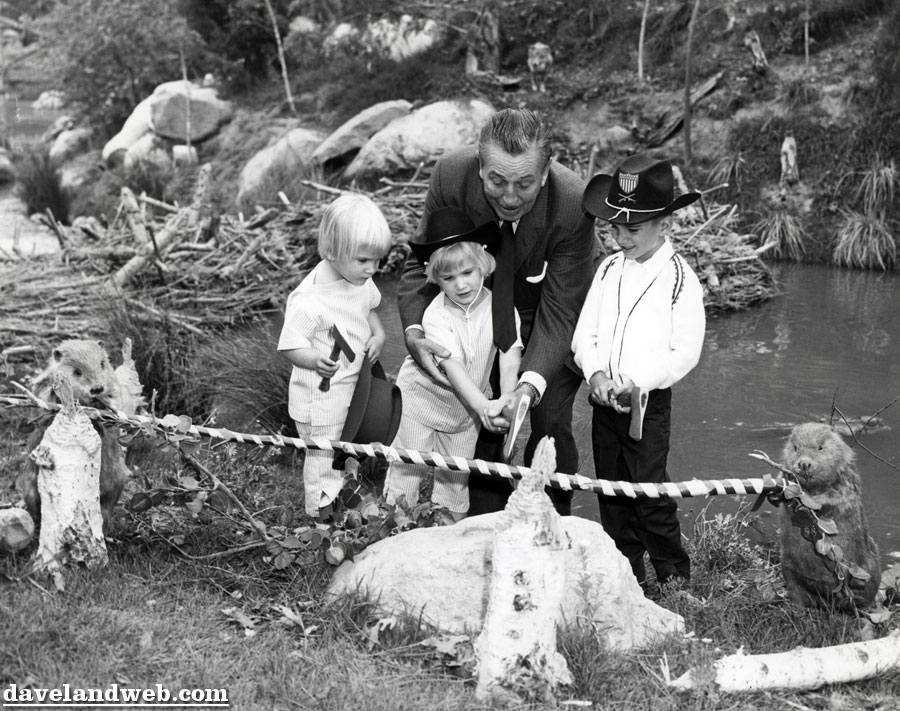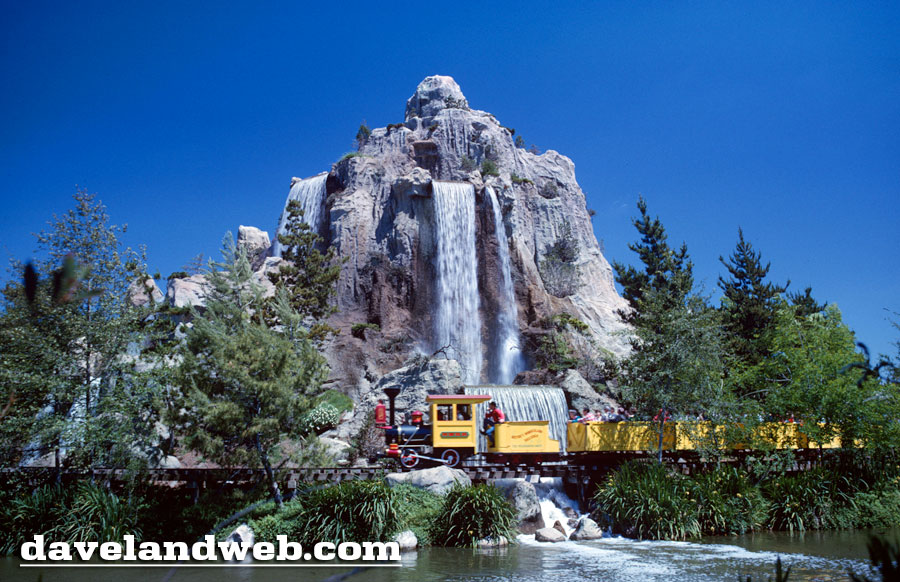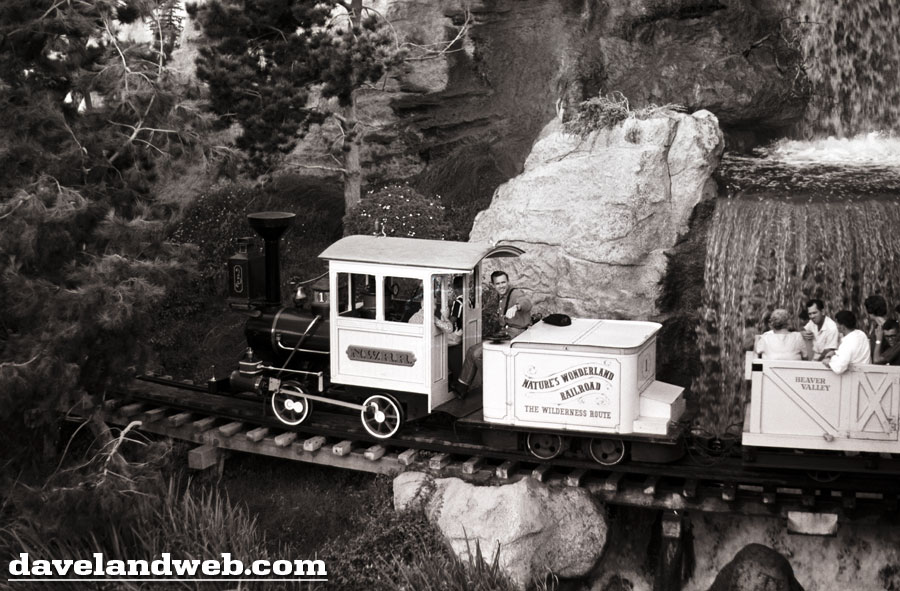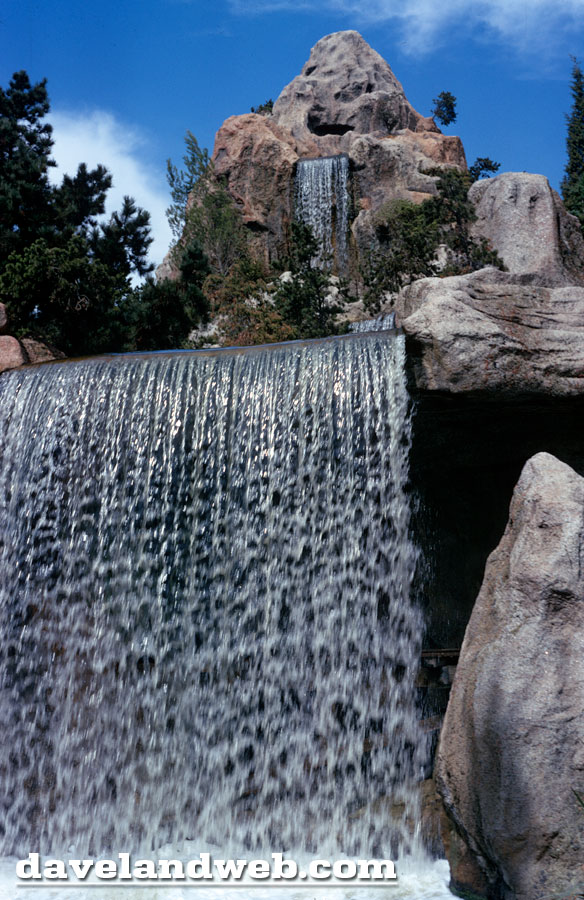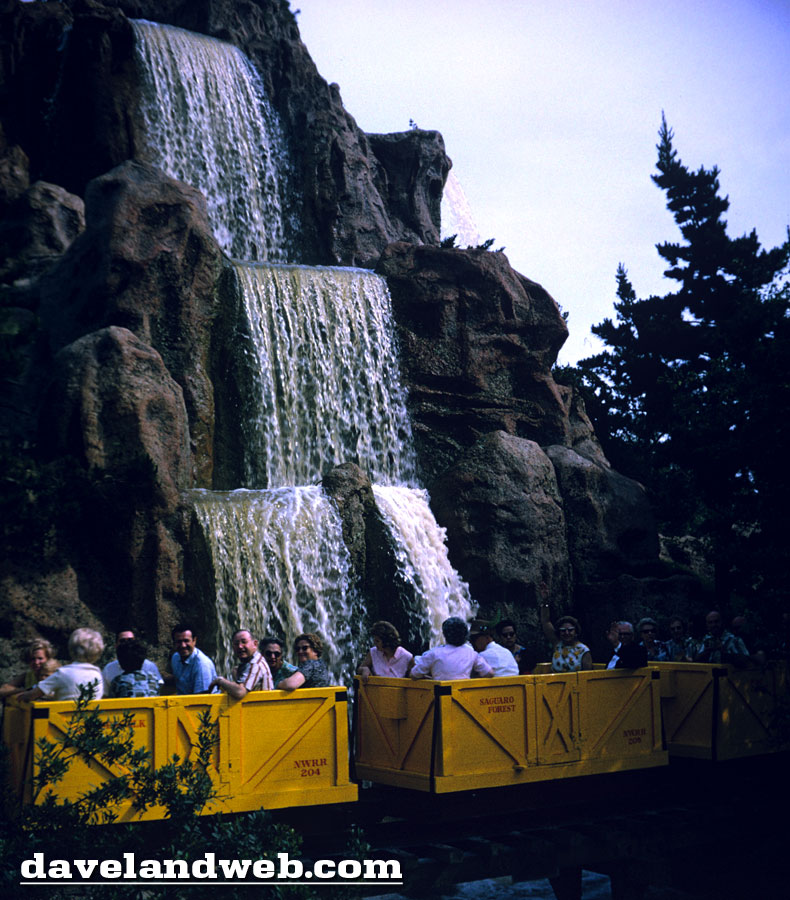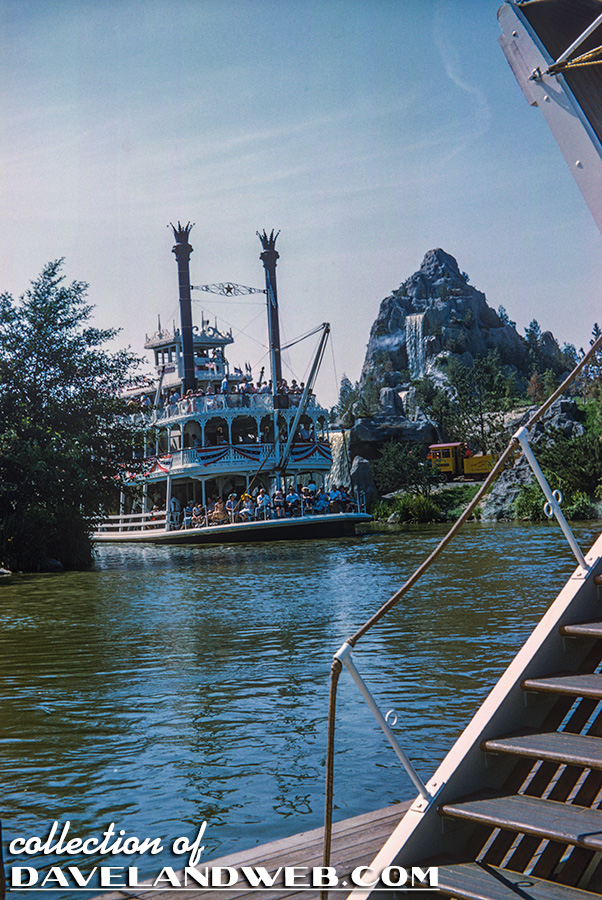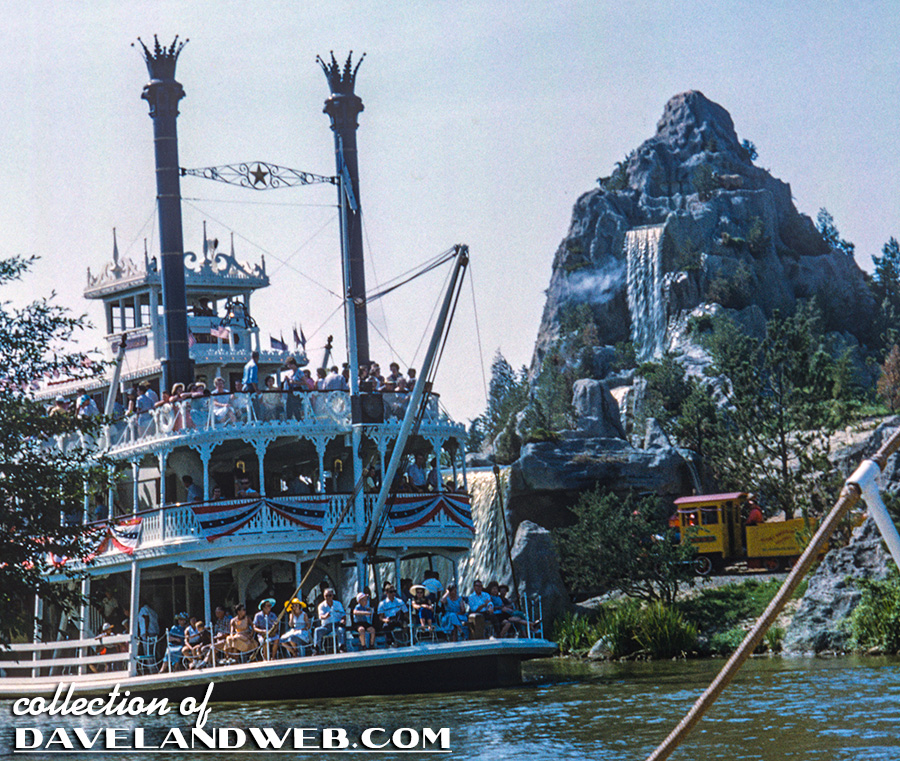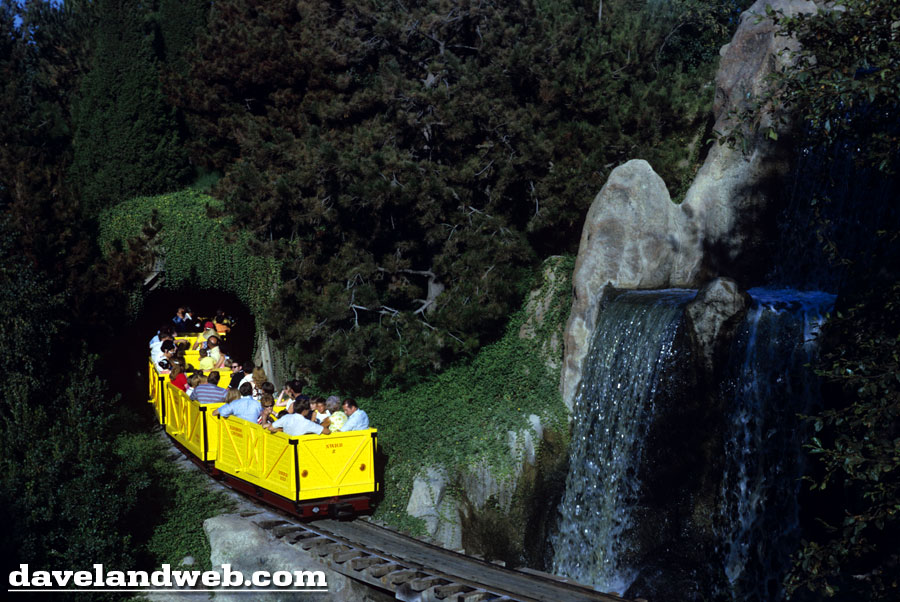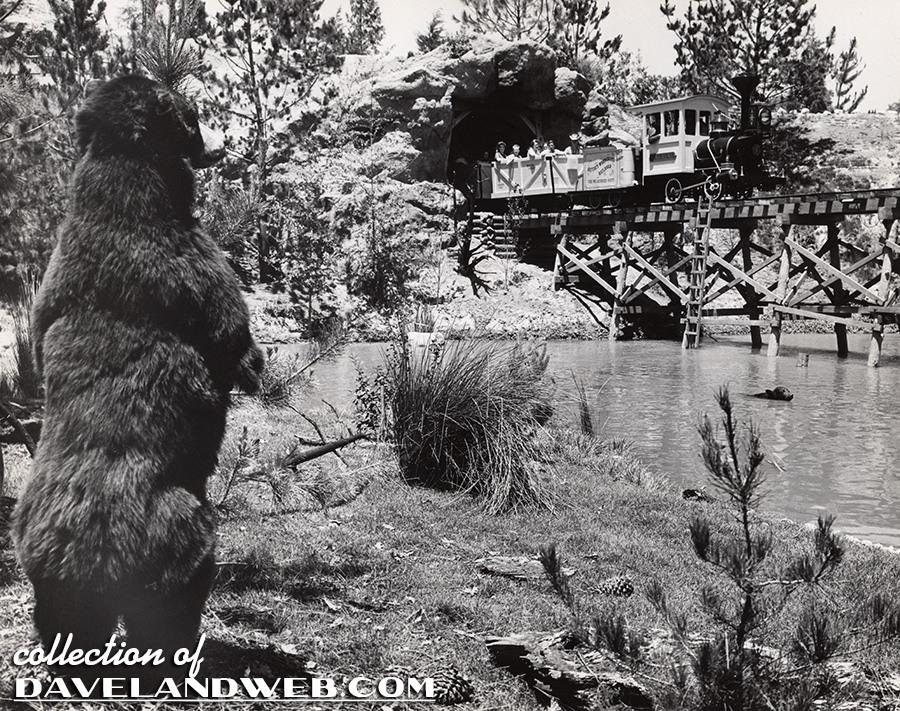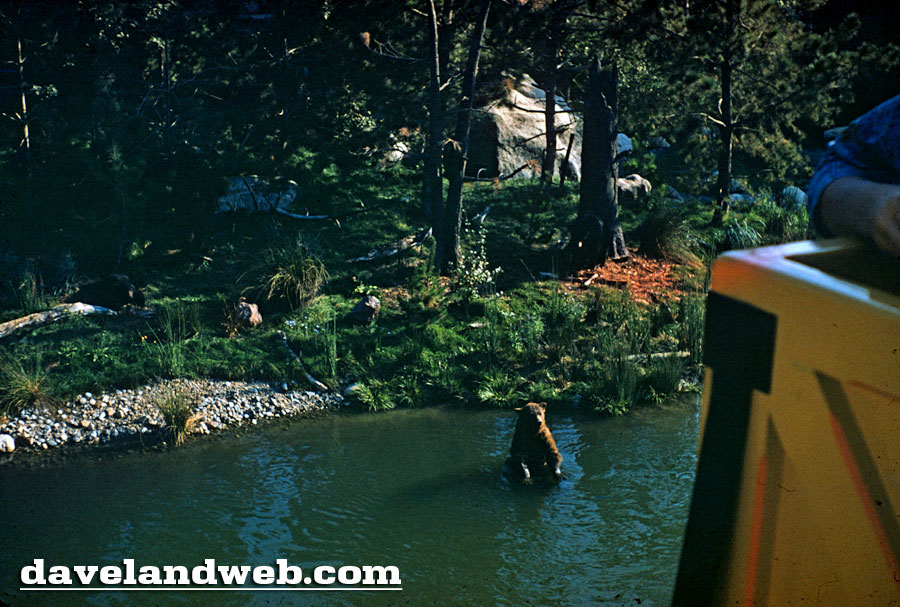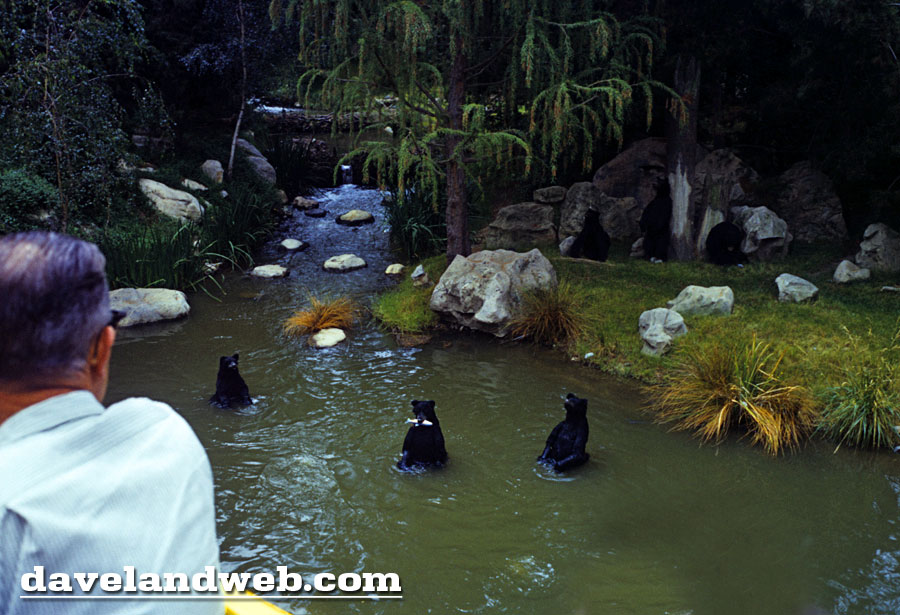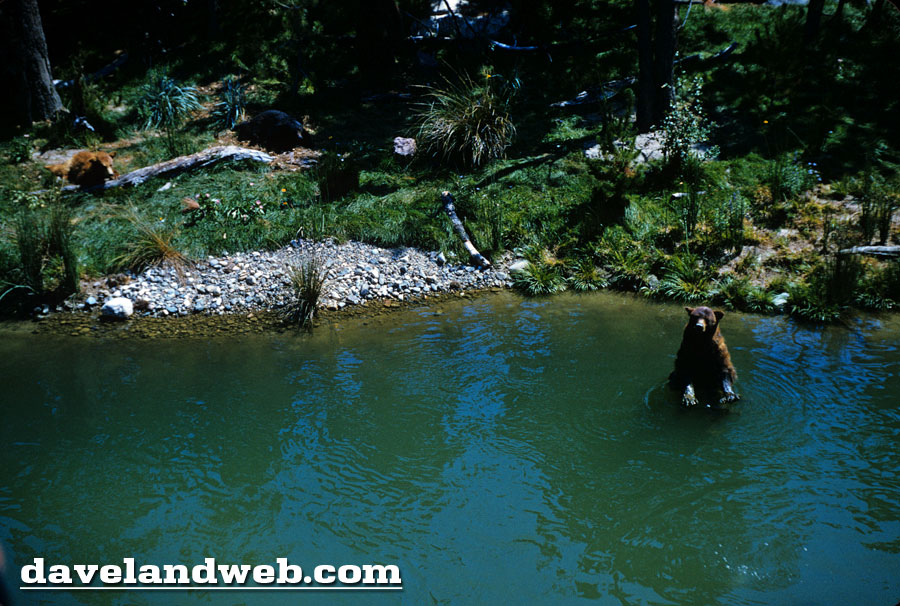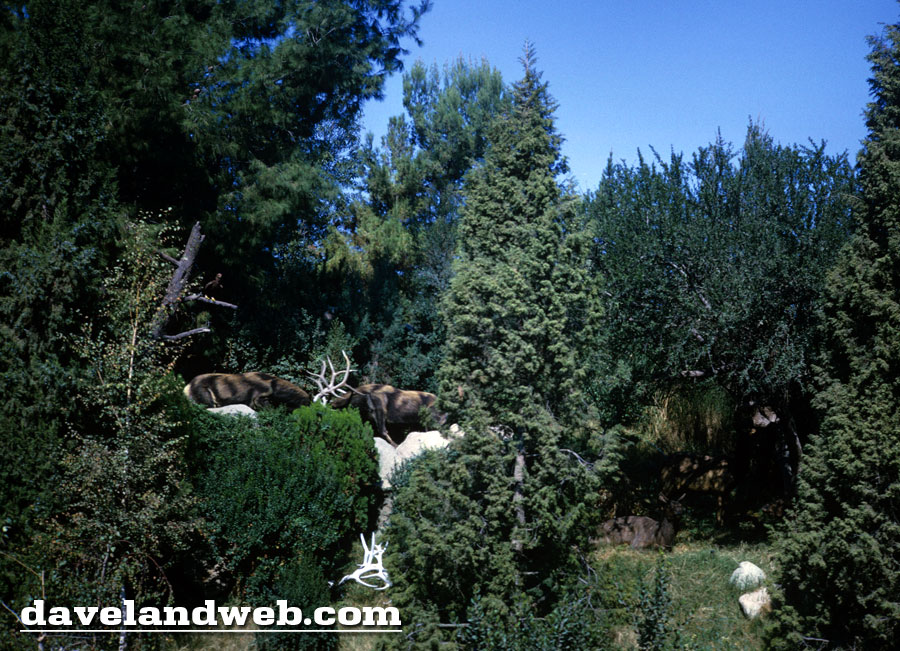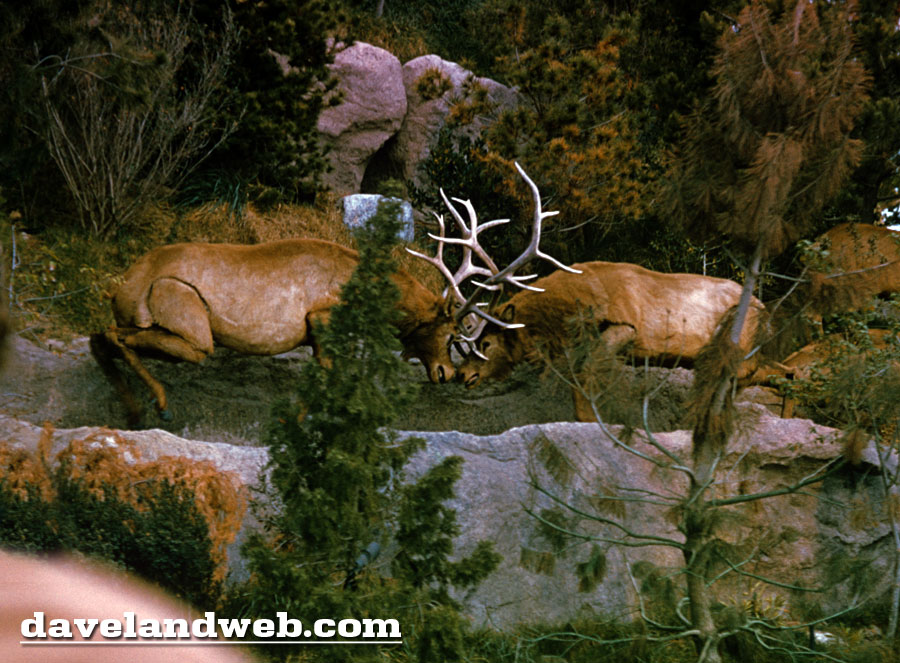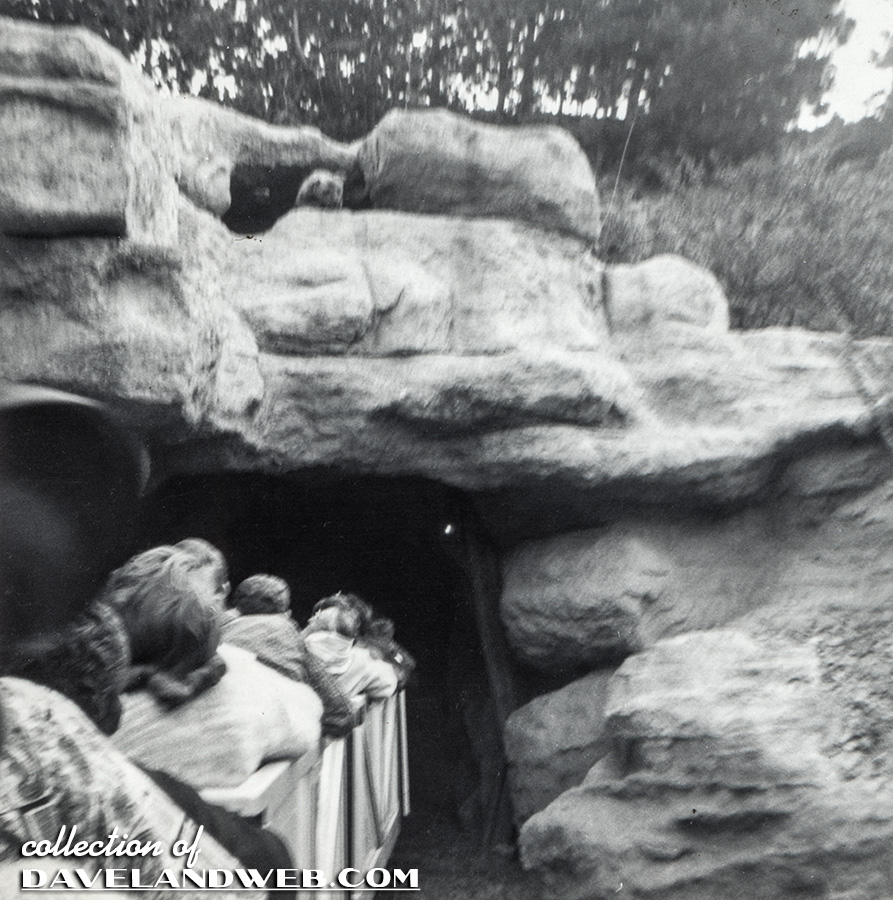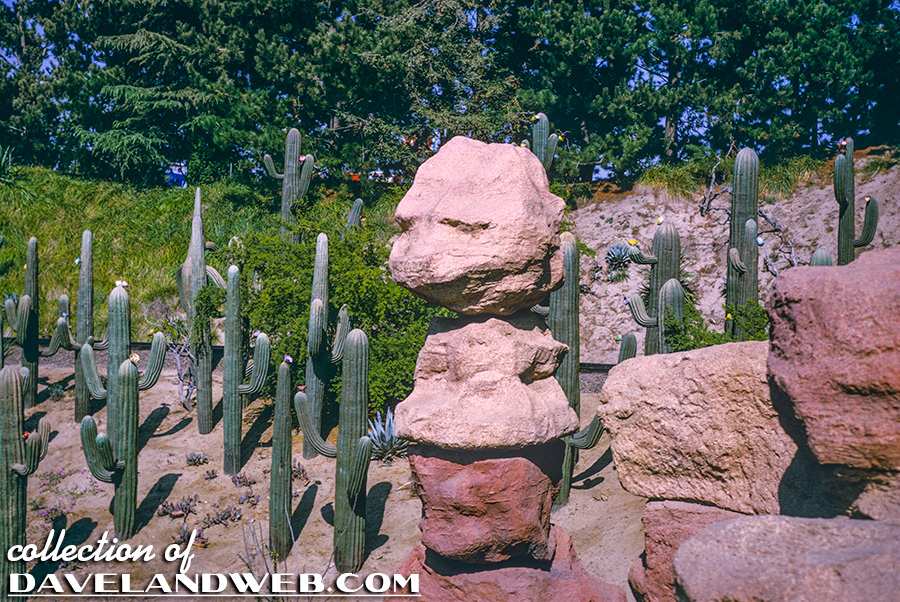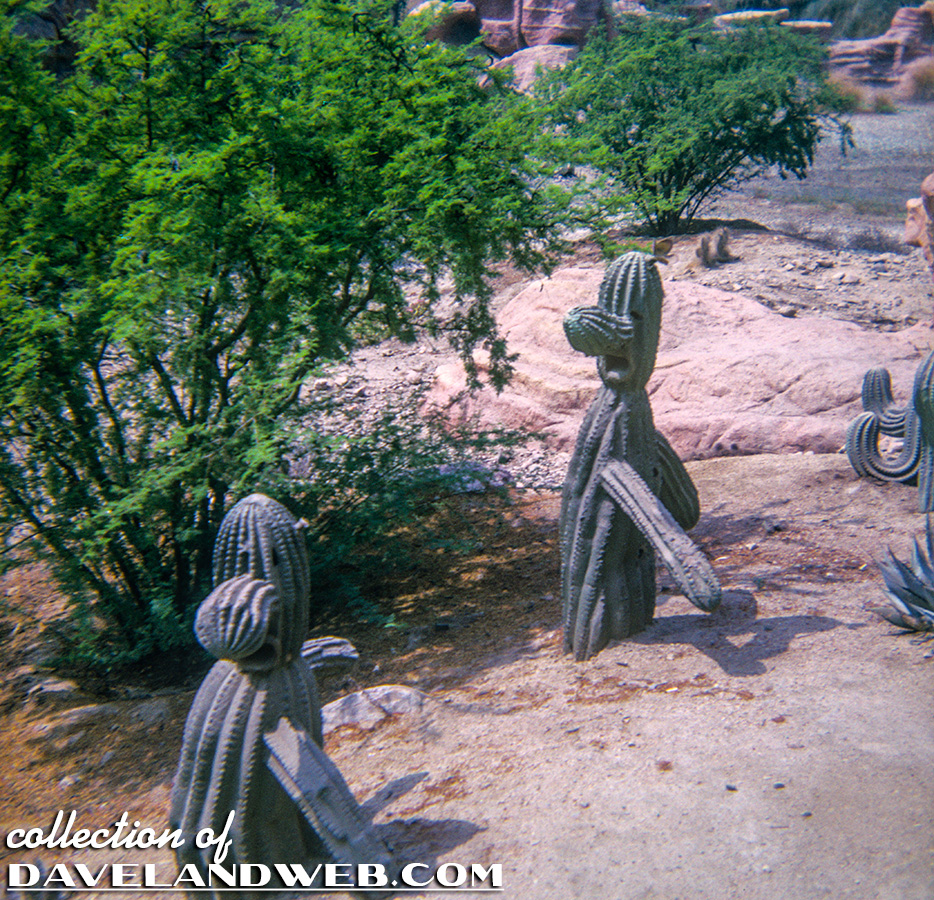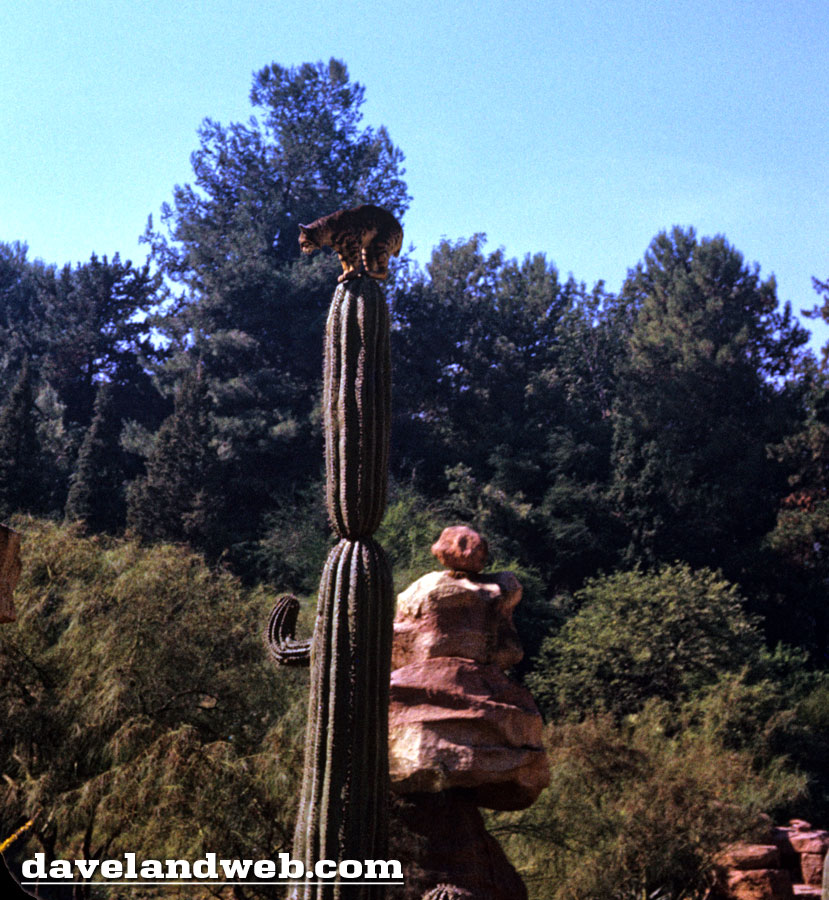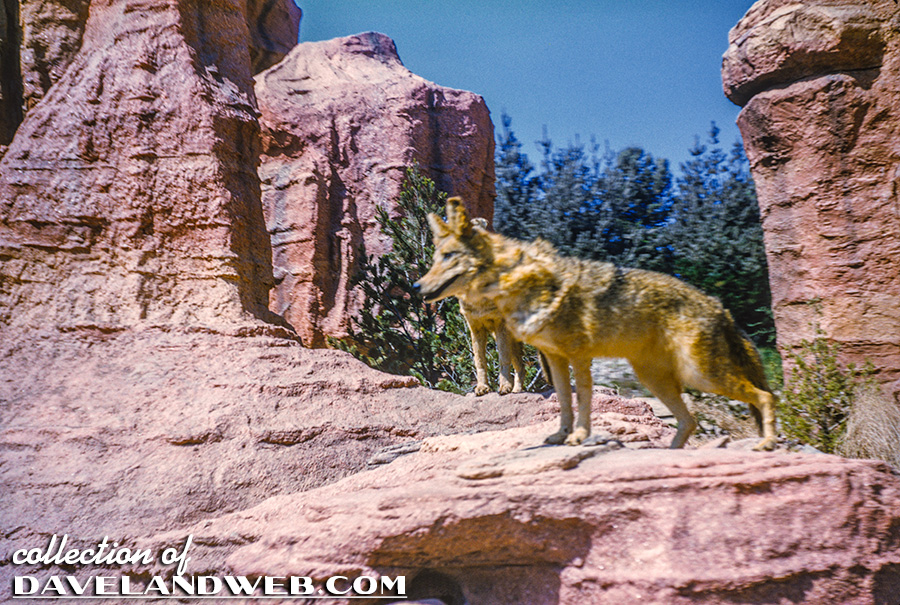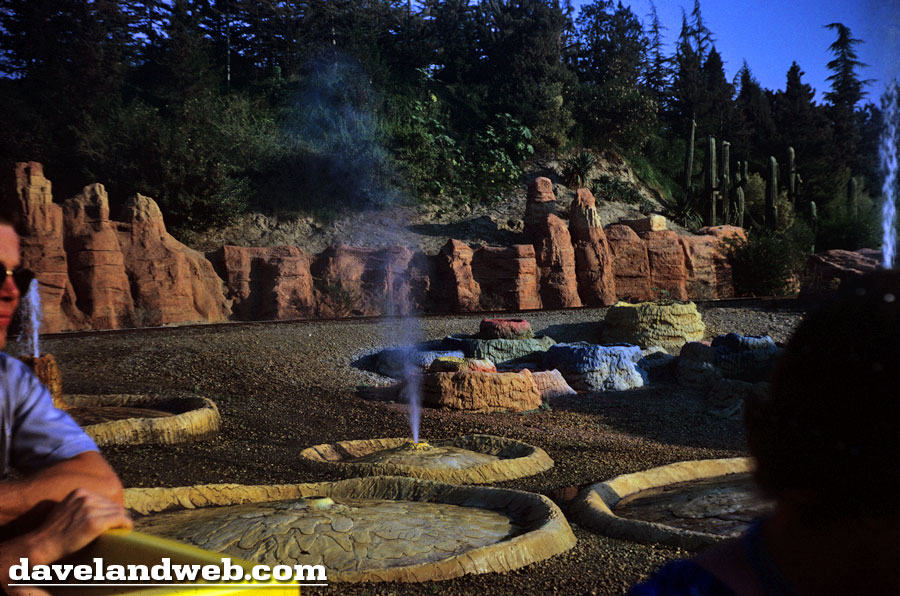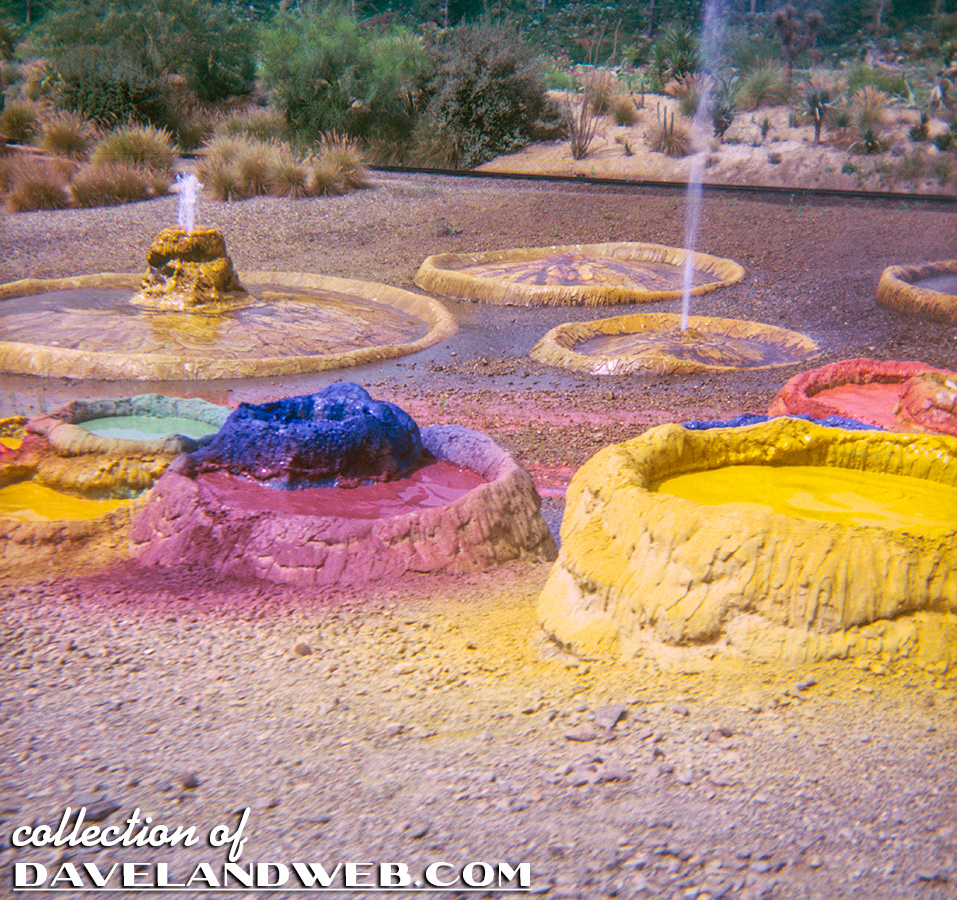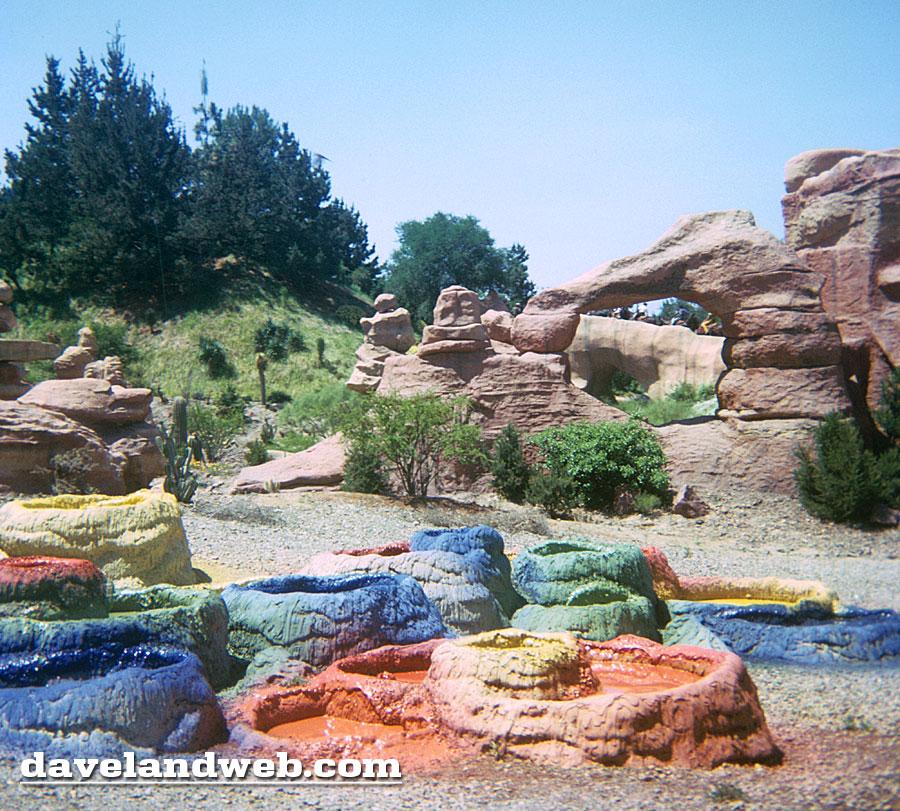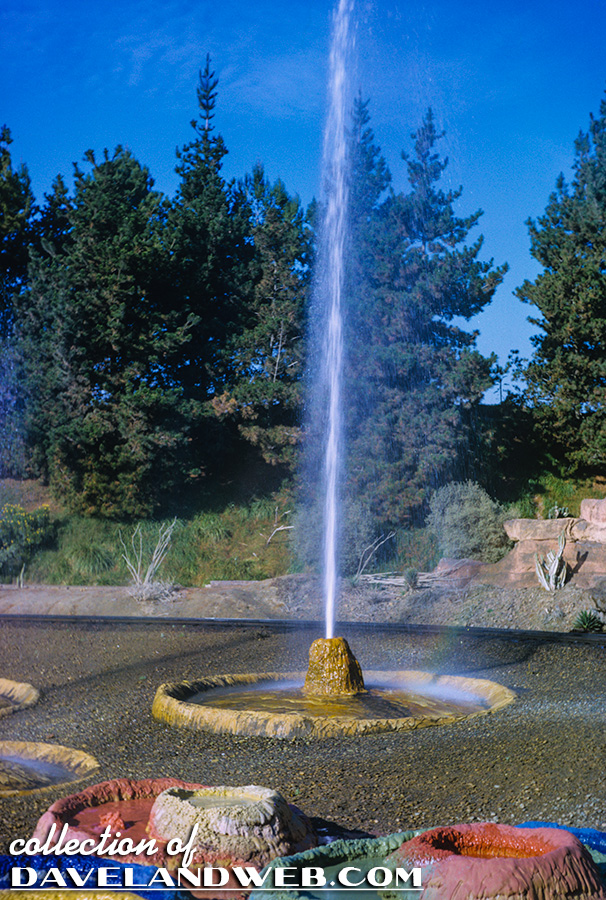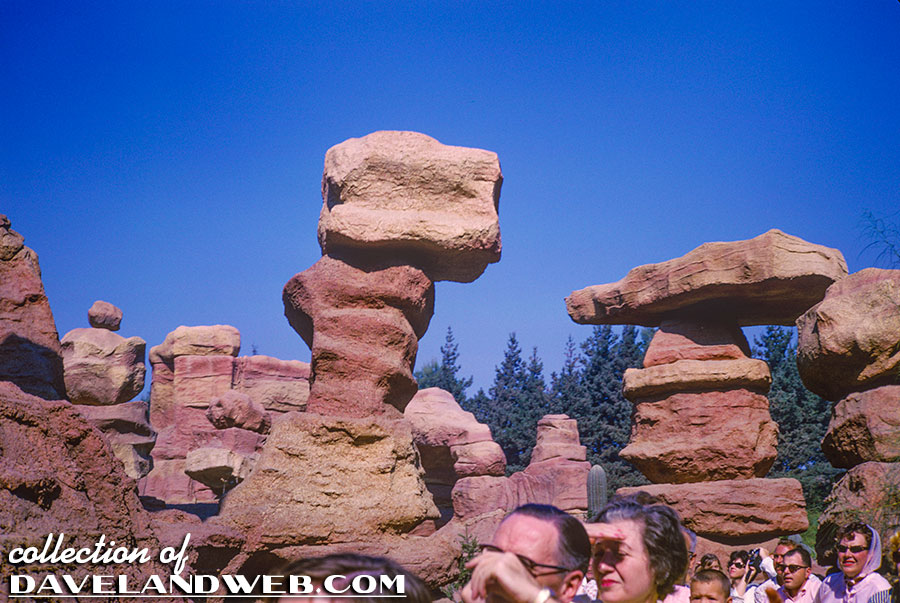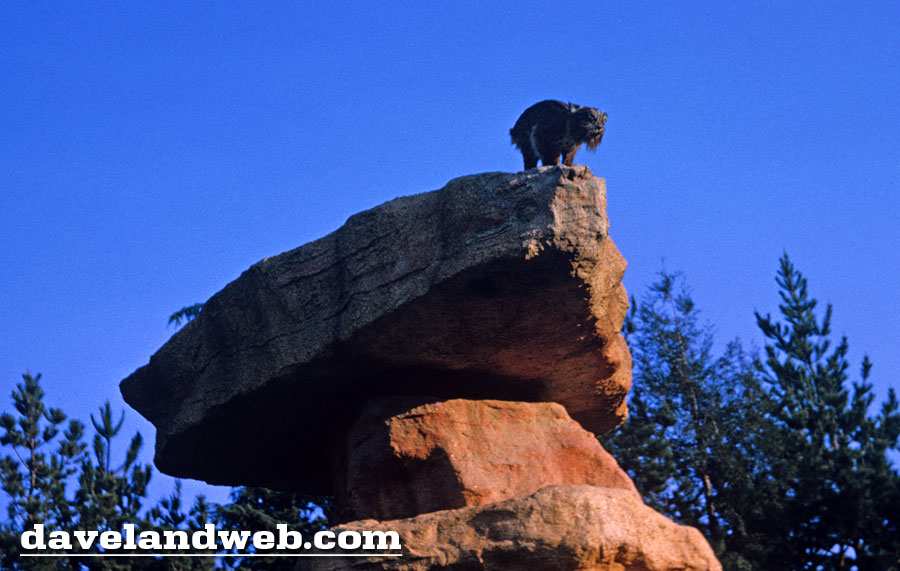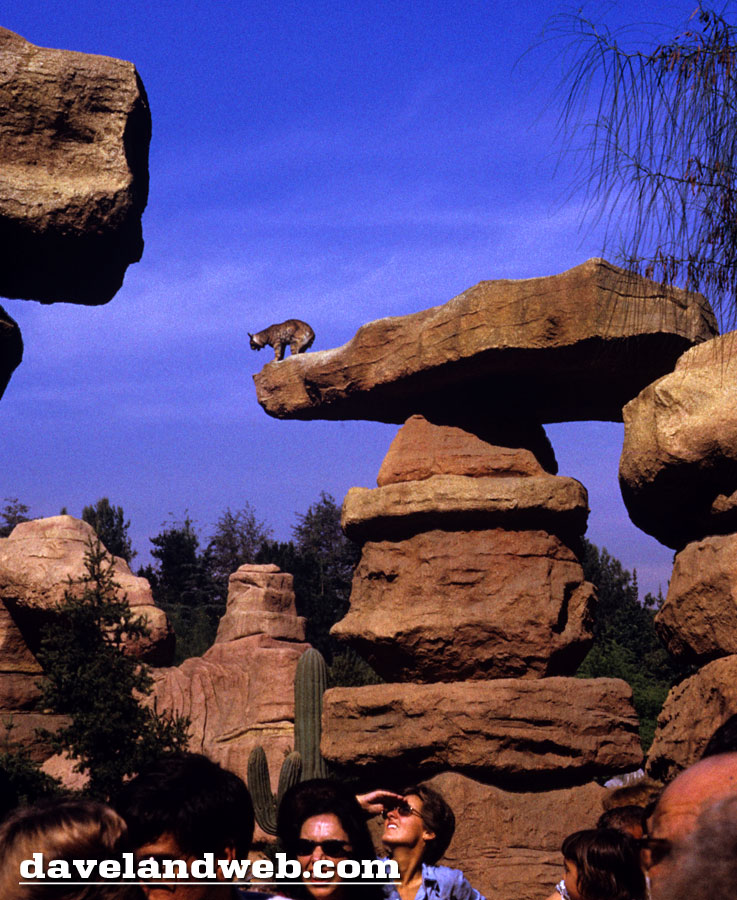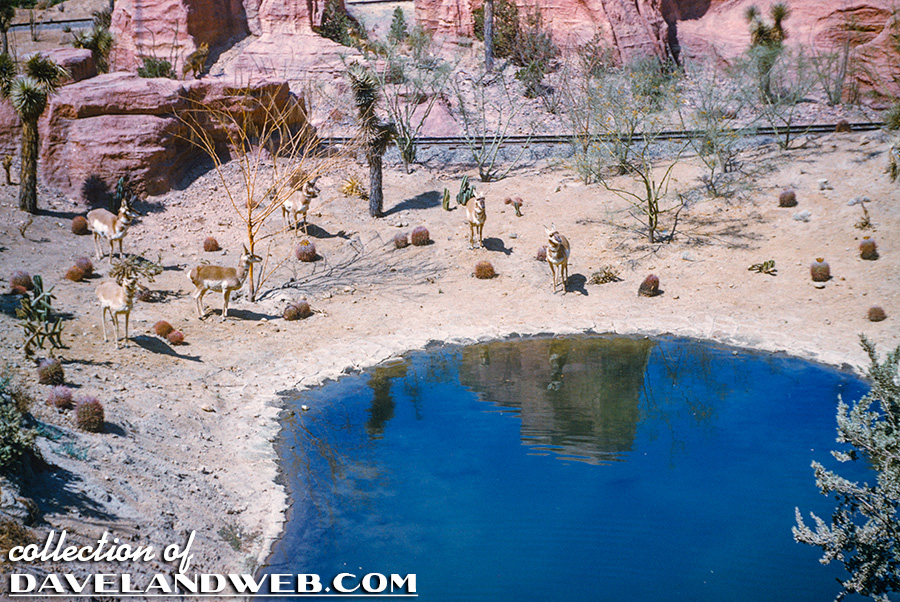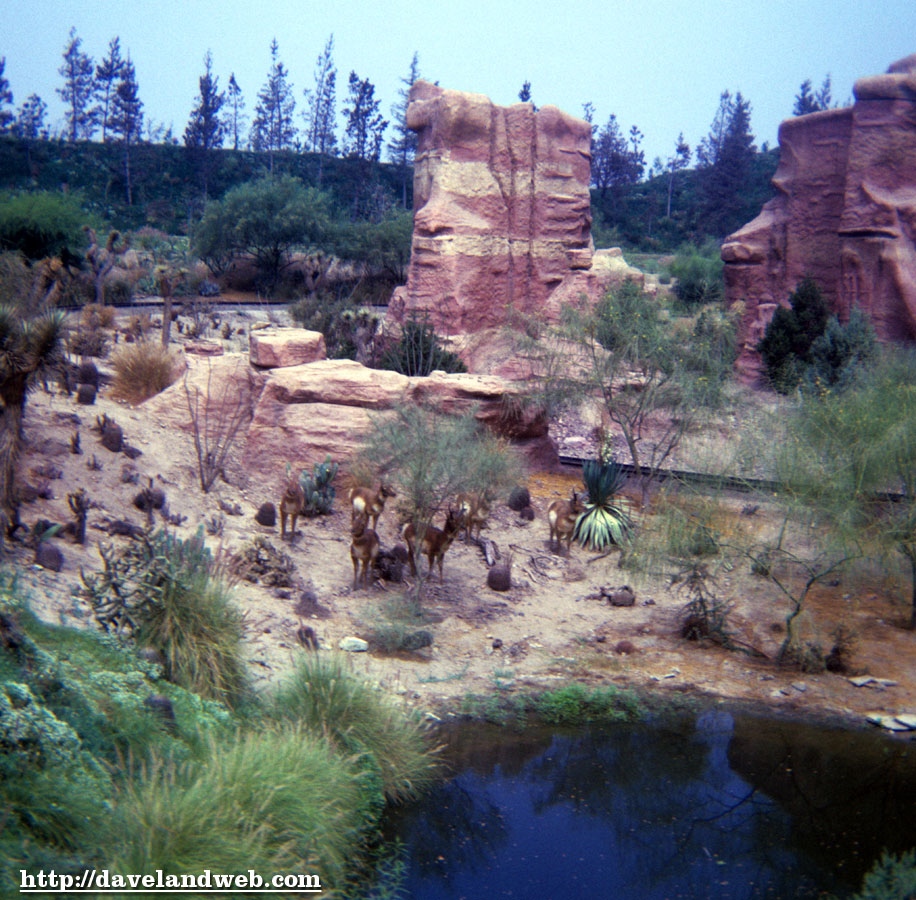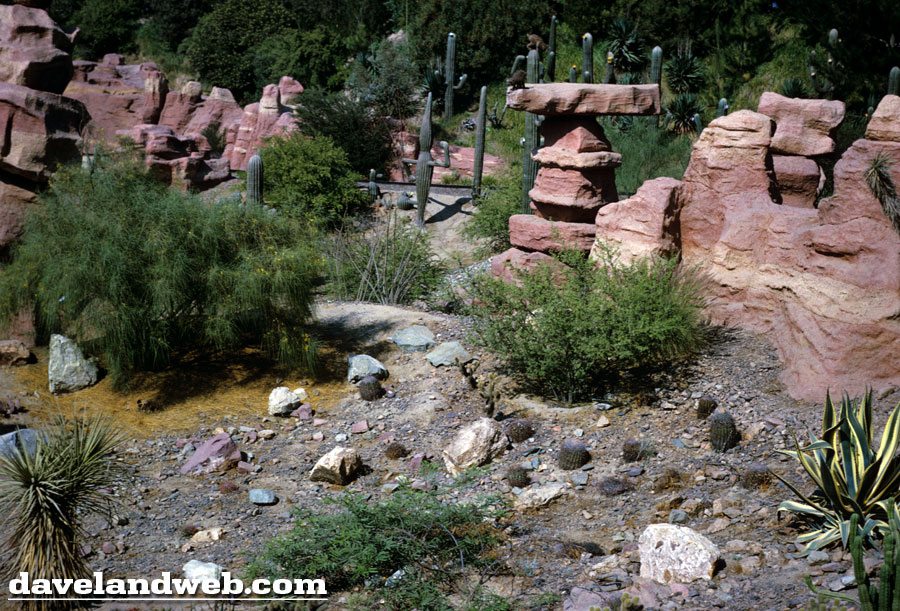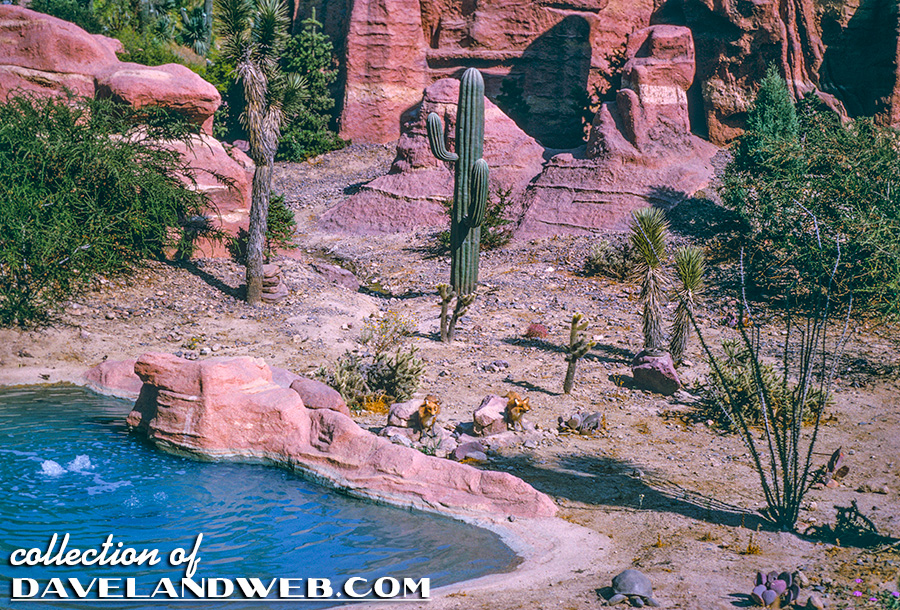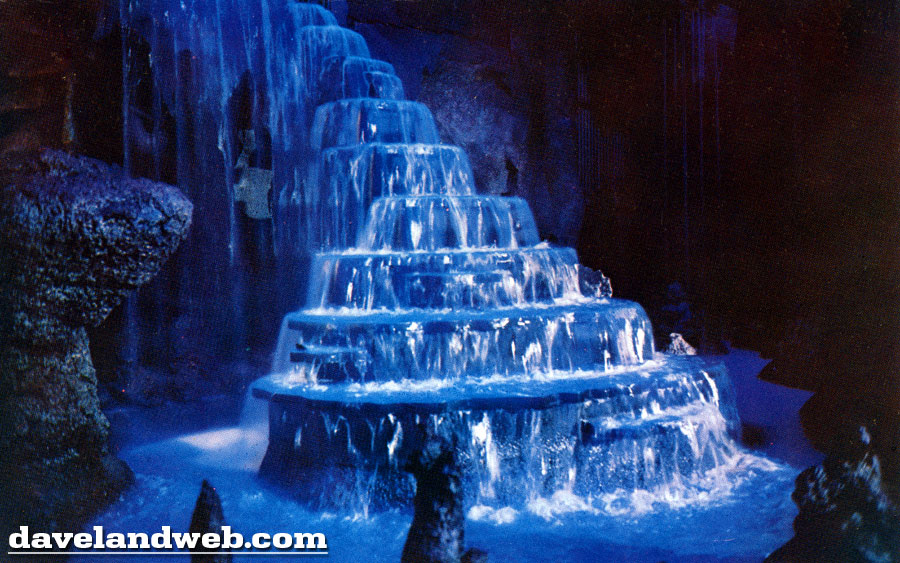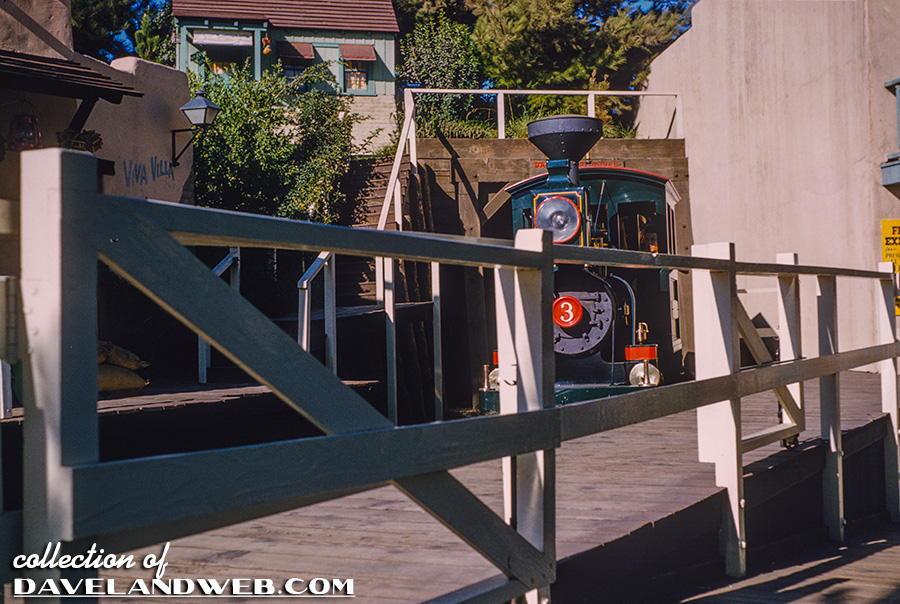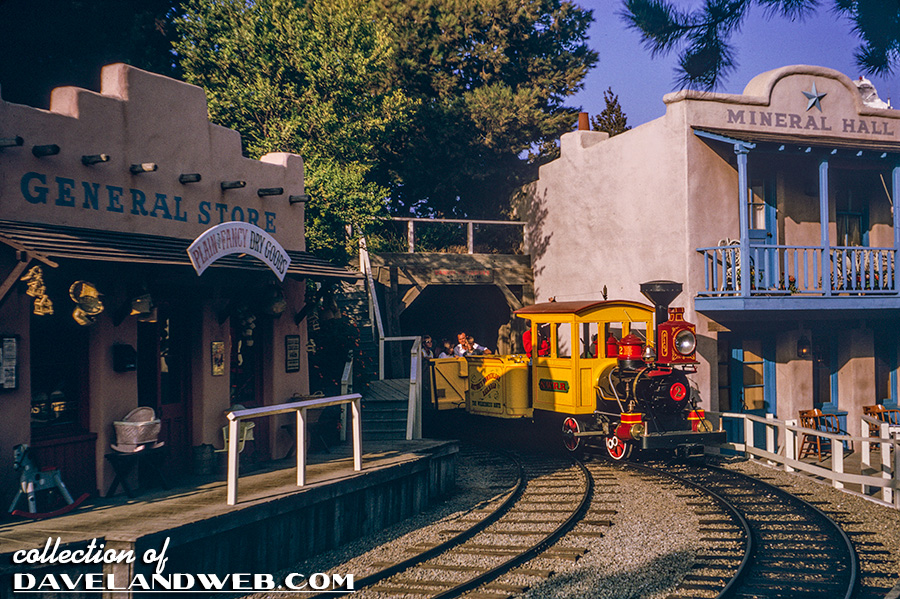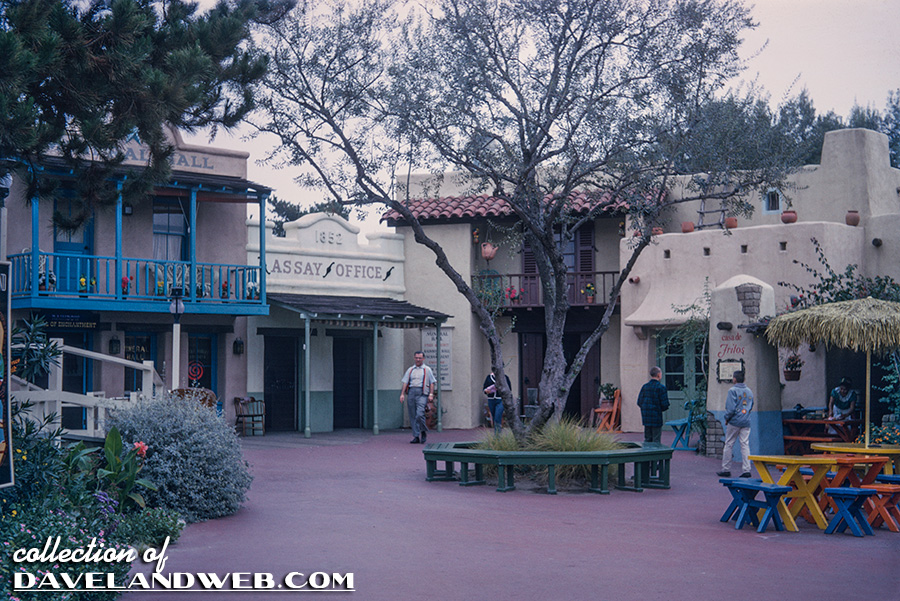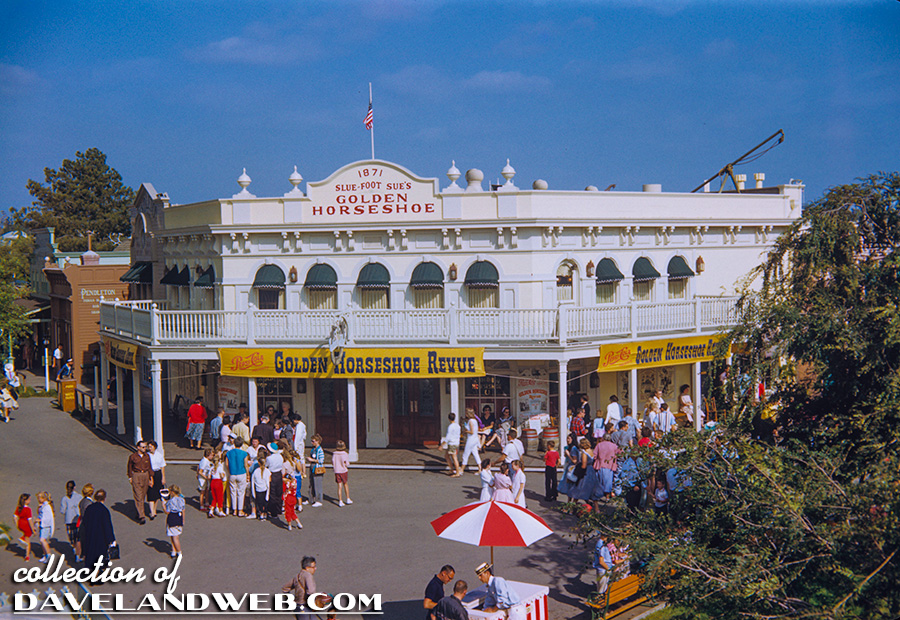
Even though the Golden Horseshoe is still at Disneyland, I would want to travel back in time and see a few shows featuring the original casts.
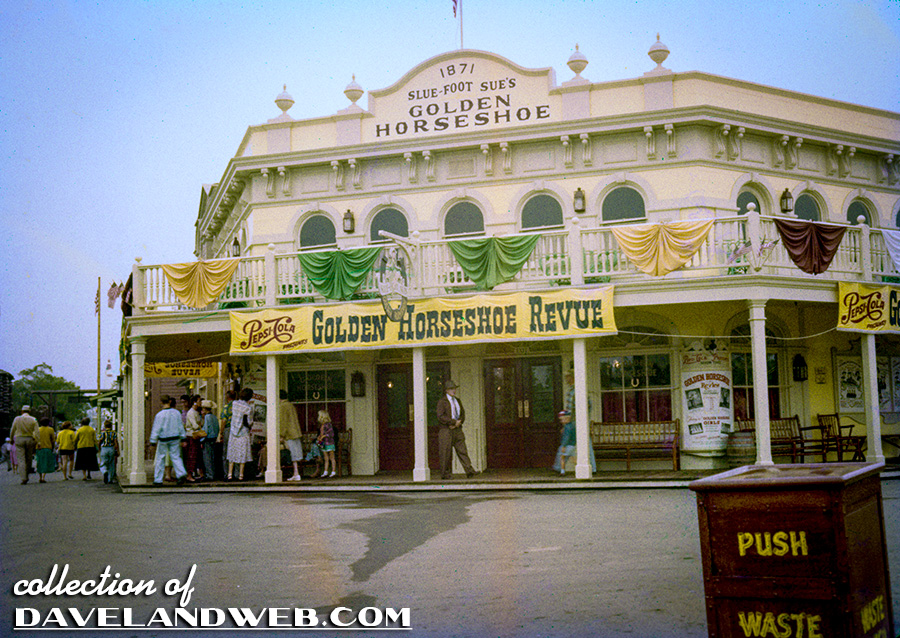
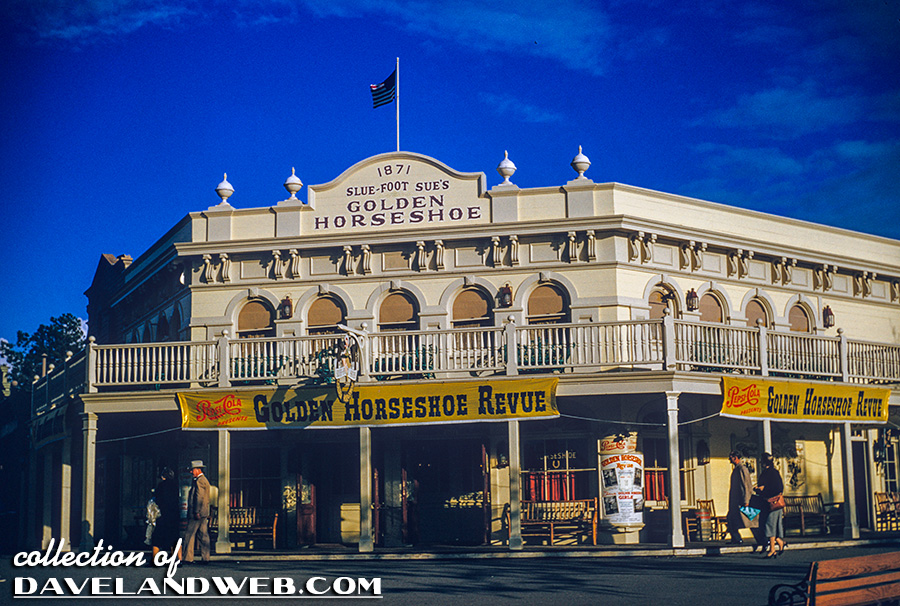
How about this sign that used to hang out front? In most shots of the GH, you don't notice it, but thanks to a smart photographer from March 1956, I am able to feast my eyes on it in living color!
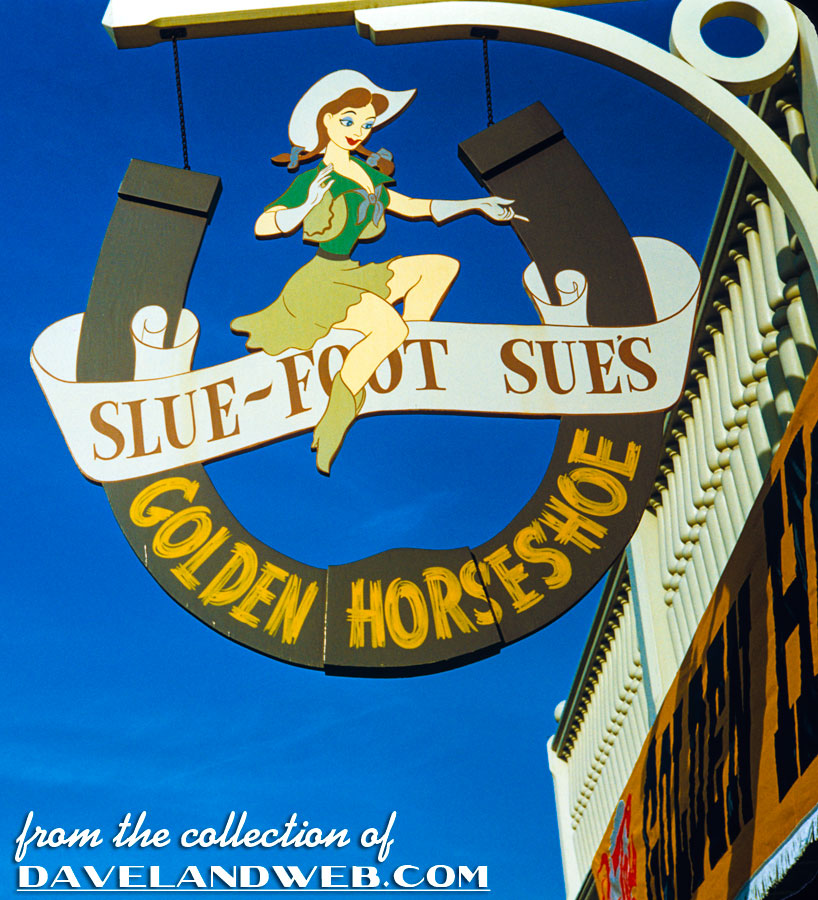
The saloon interior was designed by Harper Goff, who basically re-used his set design from the 1953 Doris Day movie “Calamity Jane.” It was the perfect addition to Frontierland, providing the one bit of glamour allowed in an uncivilized territory!
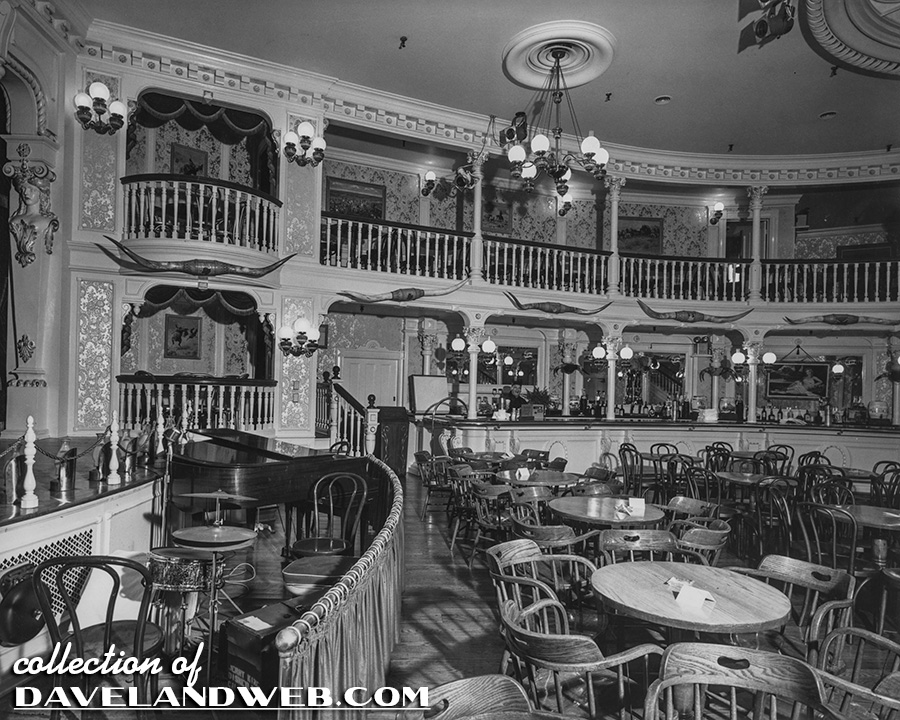
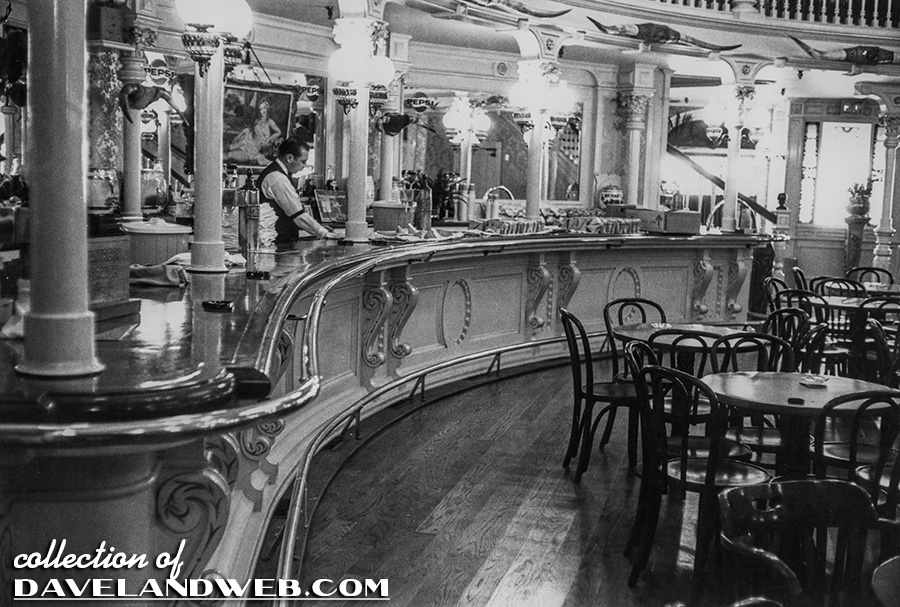
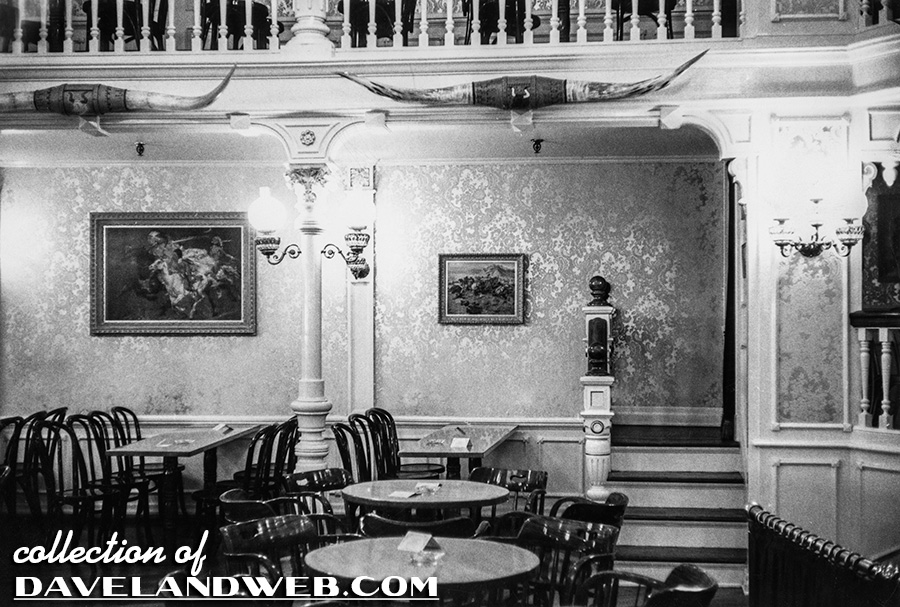
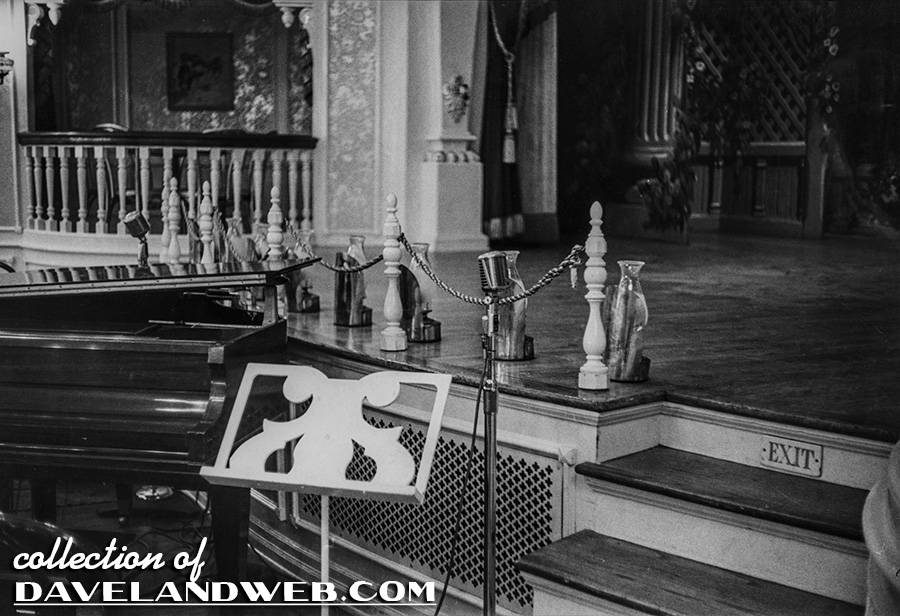
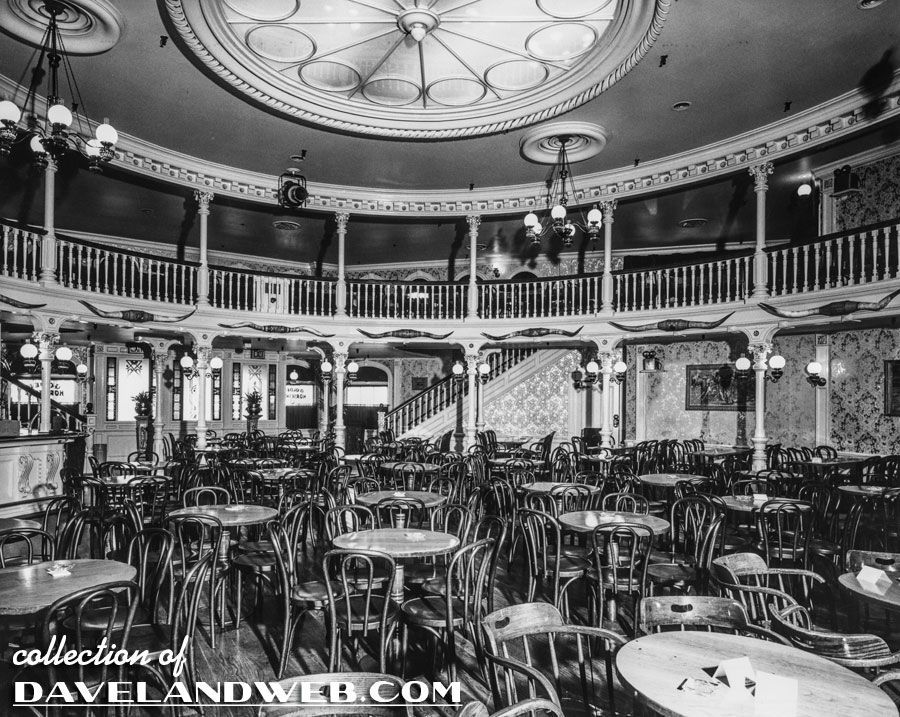
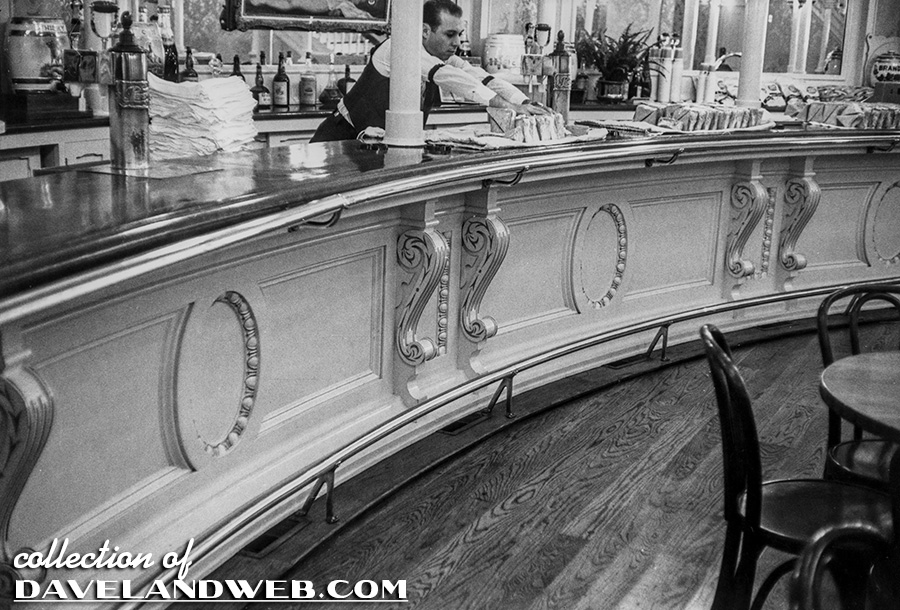
The first show at The GH was Slue Foot Sue’s Golden Horseshoe Revue, a 45 min. show which ran 50,000+ times and is listed in the Guinness Book of Records as the longest-running musical of all time.
What follows are some early shots from the GH's early years:
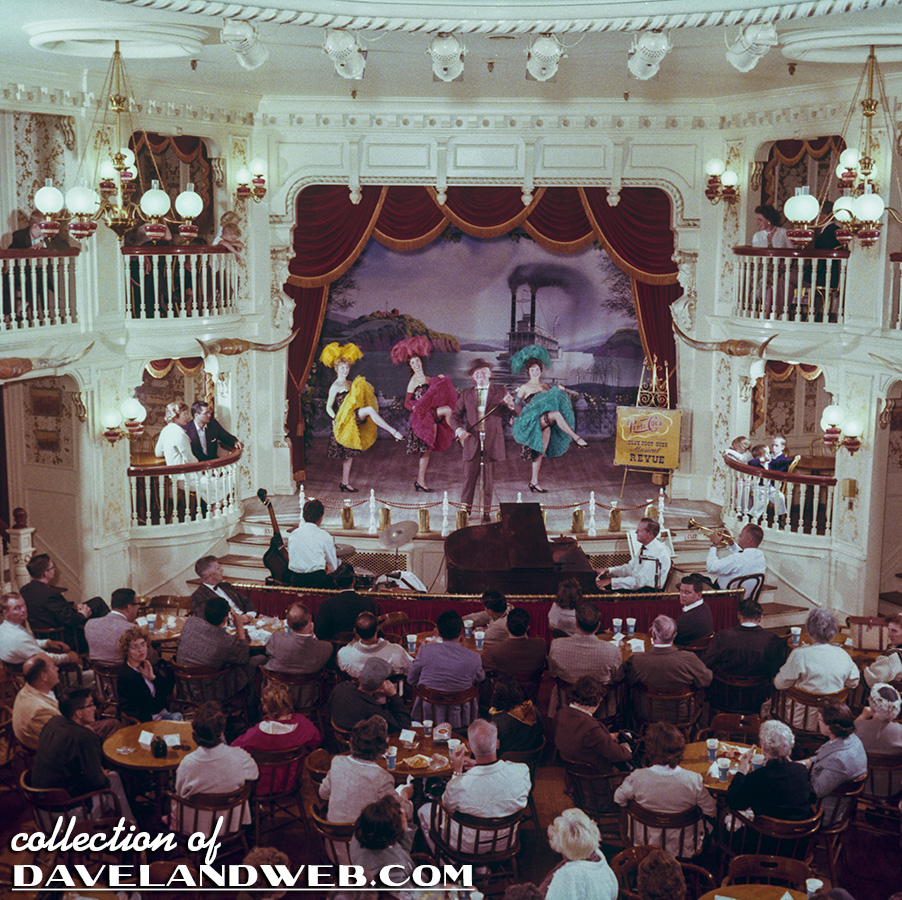
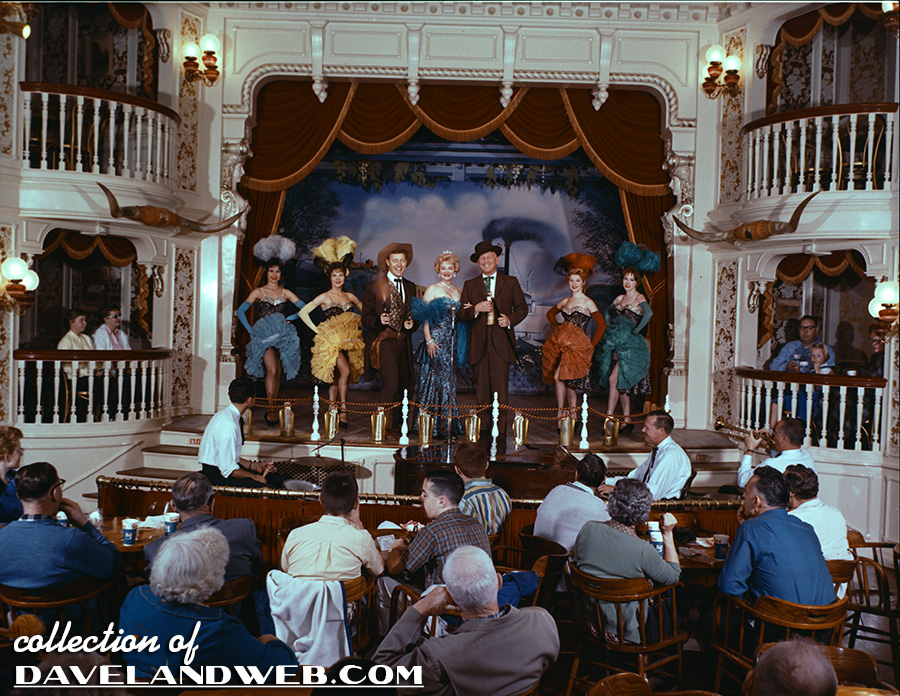
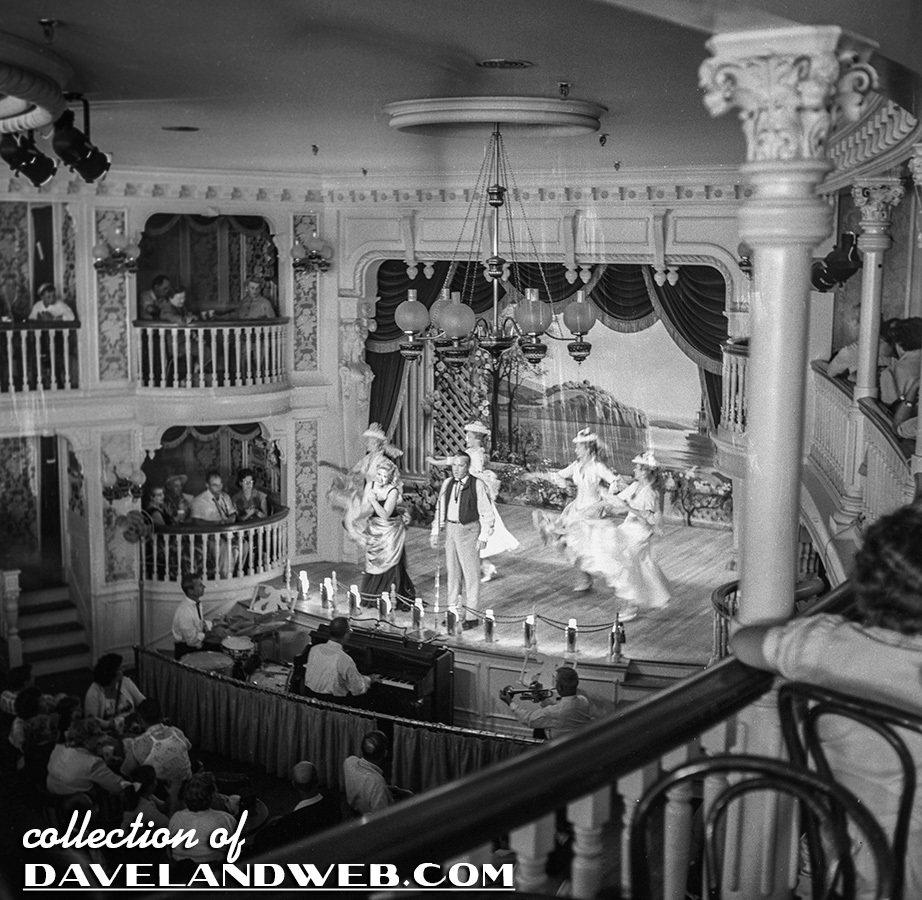
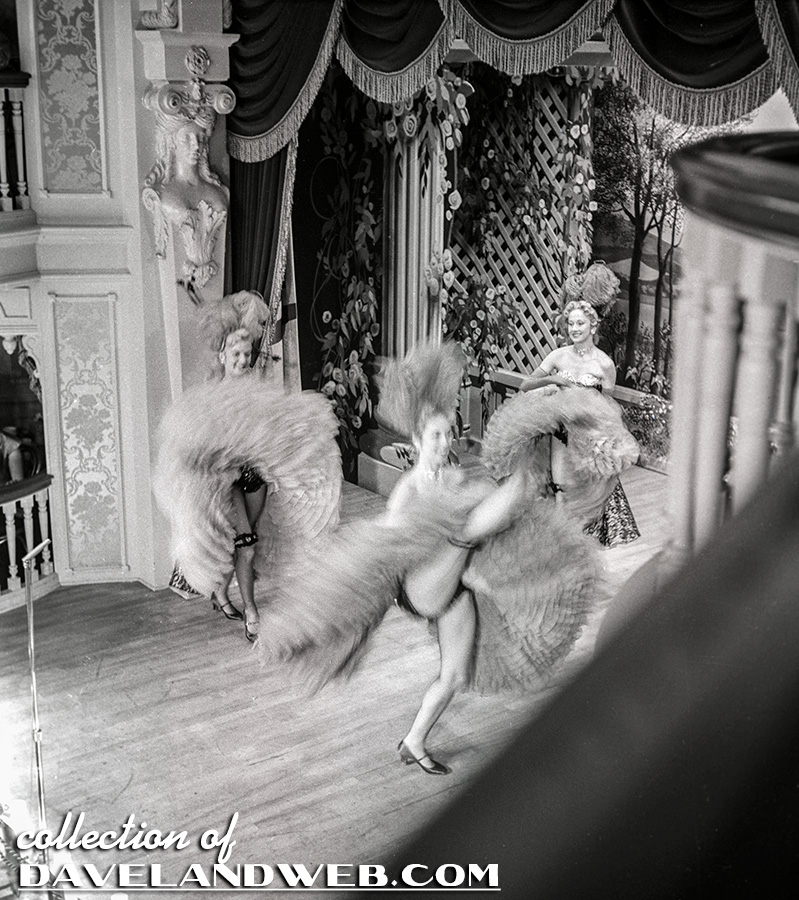
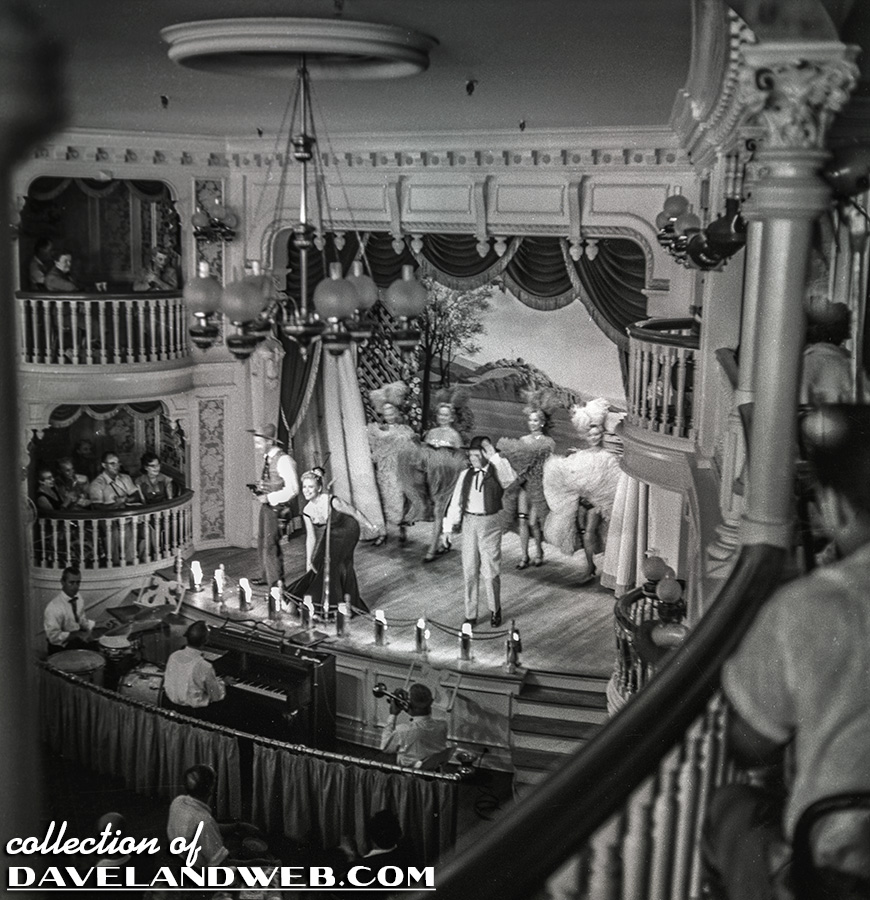
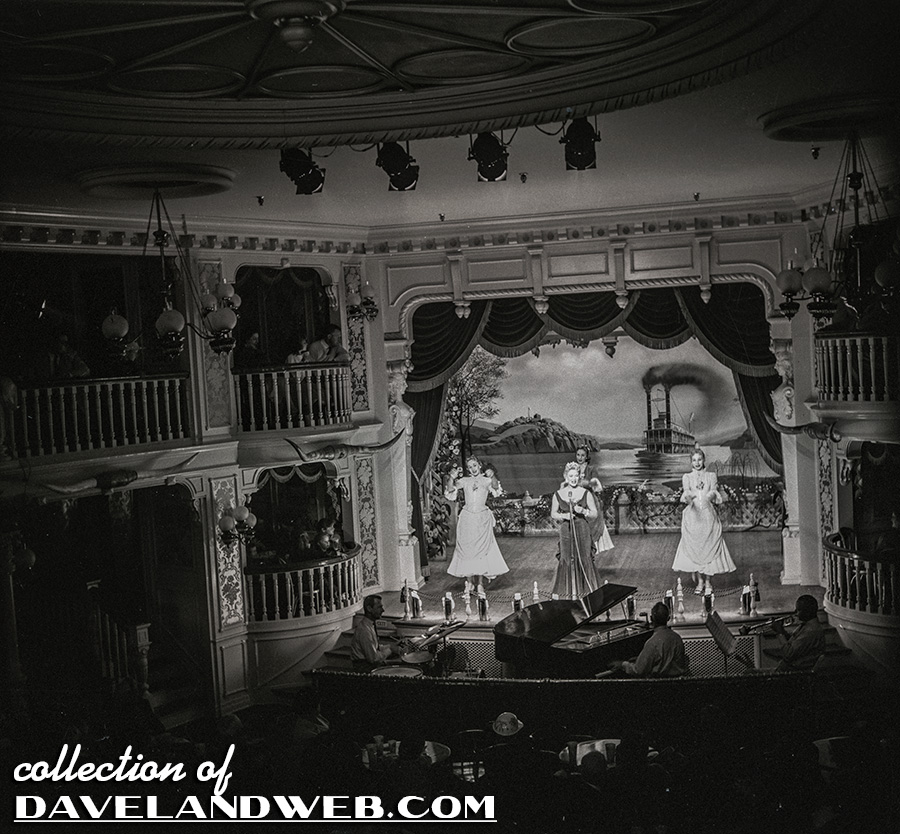
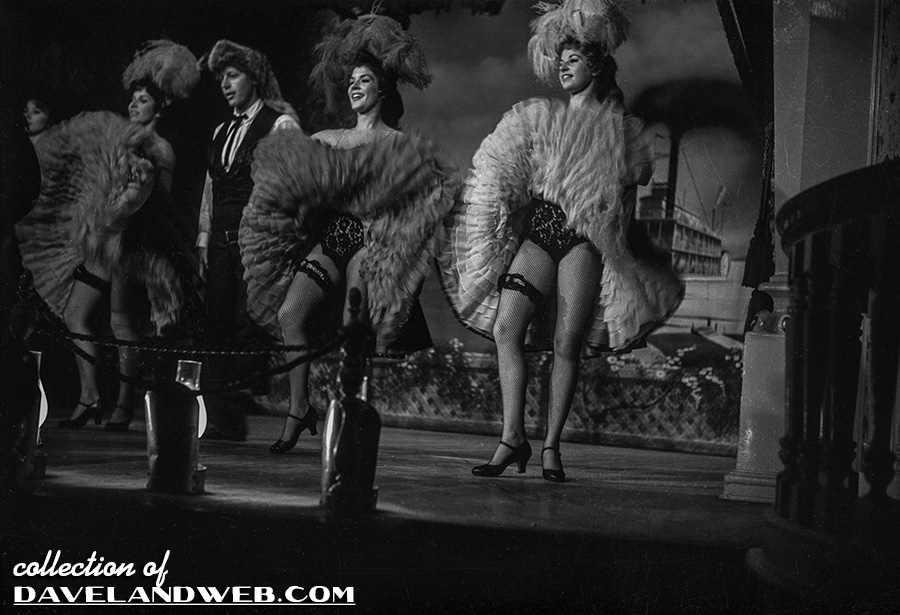
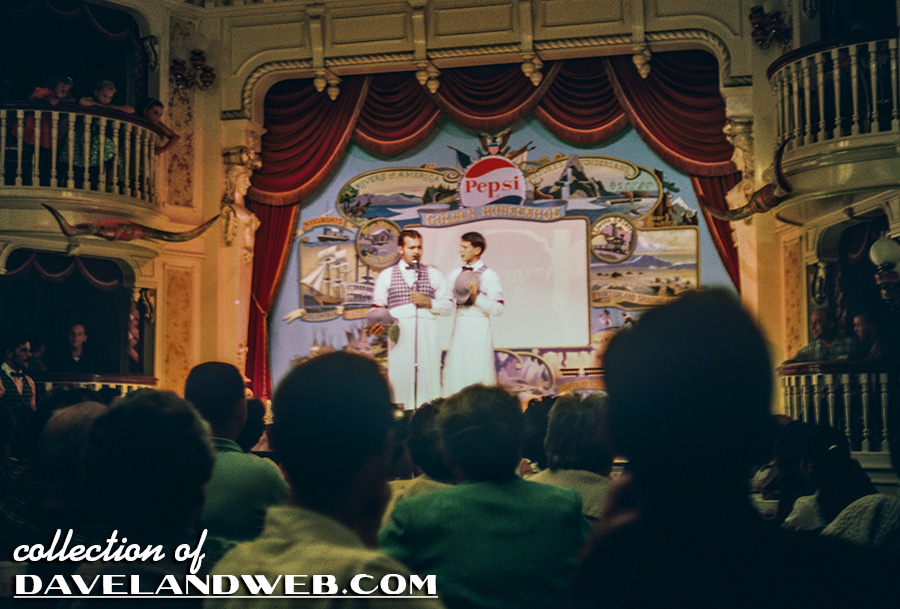
In the early 1950’s, while appearing in revues in Australia, Wally Boag met tenor Donald Novis, who got Walt Disney to audition Wally for the Golden Horseshoe Revue, written by its first pianist Charles LaVere and lyricist Tom Adair. Novis was the show's first tenor (later replaced by Fulton Burley). Boag’s Pecos Bill/Traveling Salesman character specialized in slapstick humor, squirt guns, an endless supply of broken teeth (which he’d spit out at the audience), and...
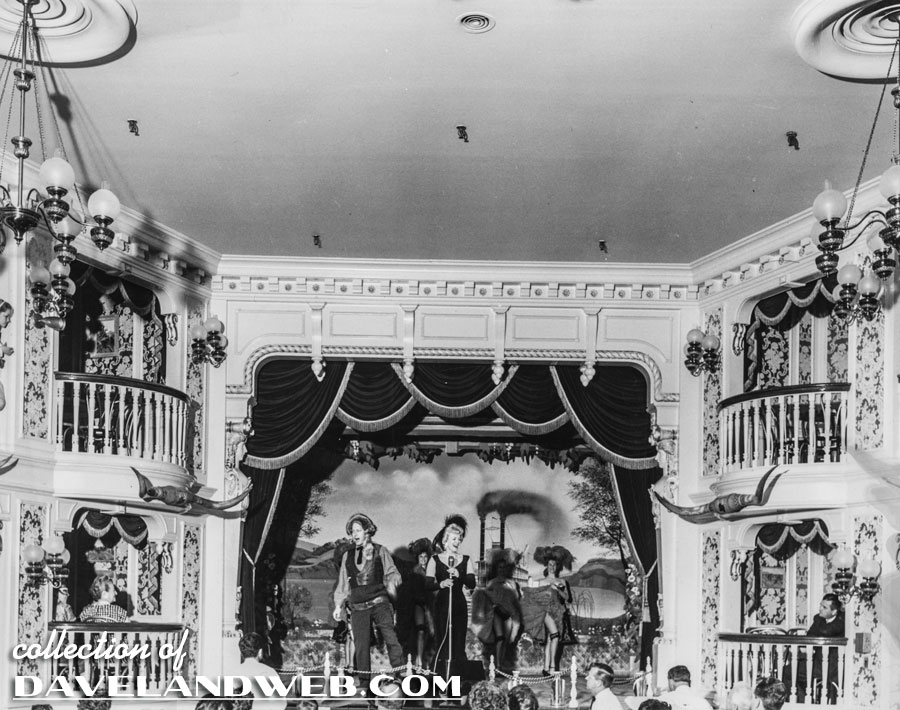
his signature balloon animals (aka Boagaloons). Boag began his stint at the Horseshoe with a 2-week contract signed with Walt Disney. One of the features of the show was to have children in the audience sing & dance on stage; “Davy Crockett” was a favorite.
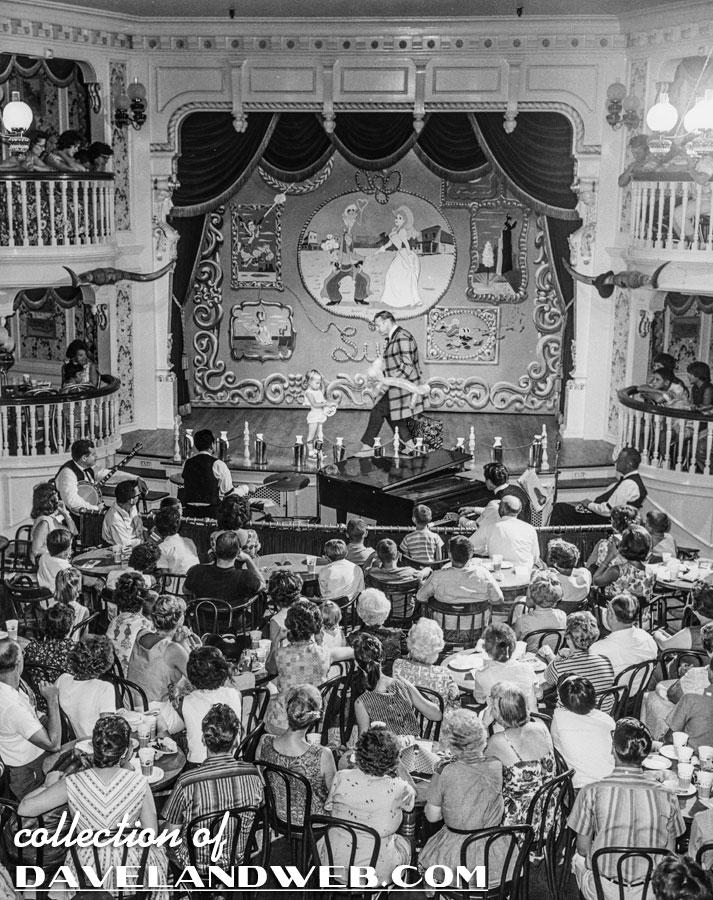
The role of Slue Foot Sue originated with Judy Marsh, and then was taken over by Betty Taylor in 1956 (who gave over 45,000 performances).
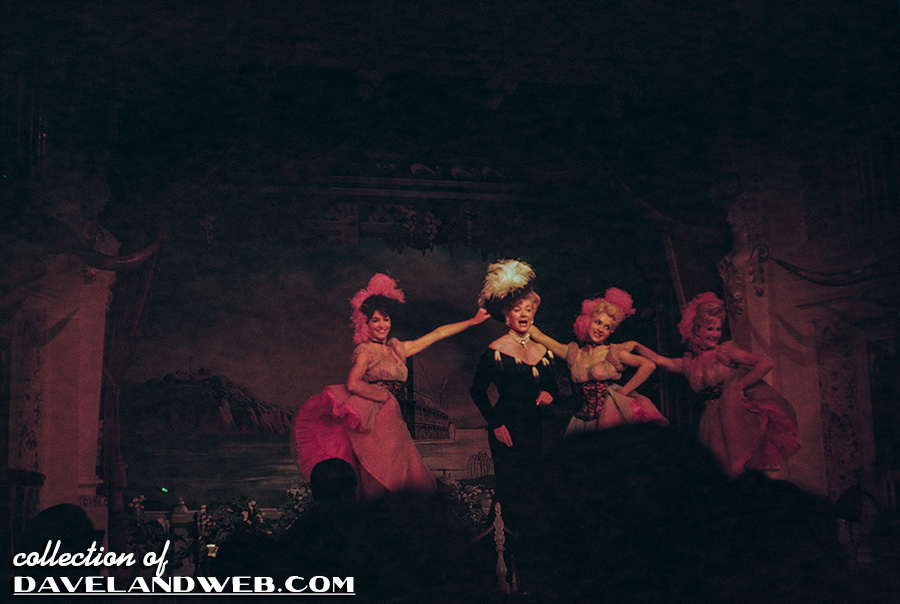
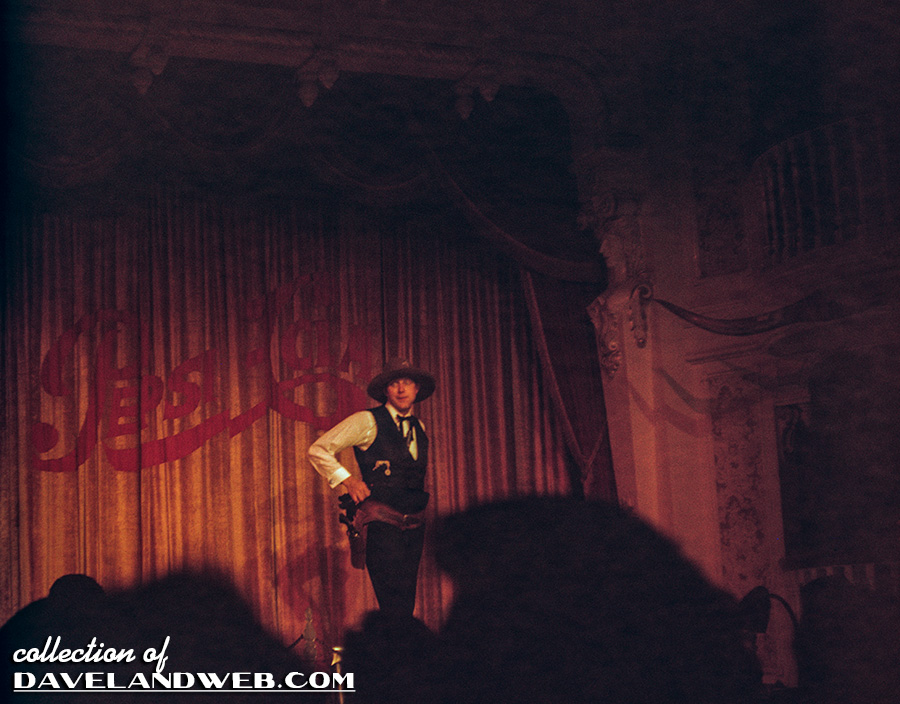
The cast relaxes with (what else?) Pepsi!
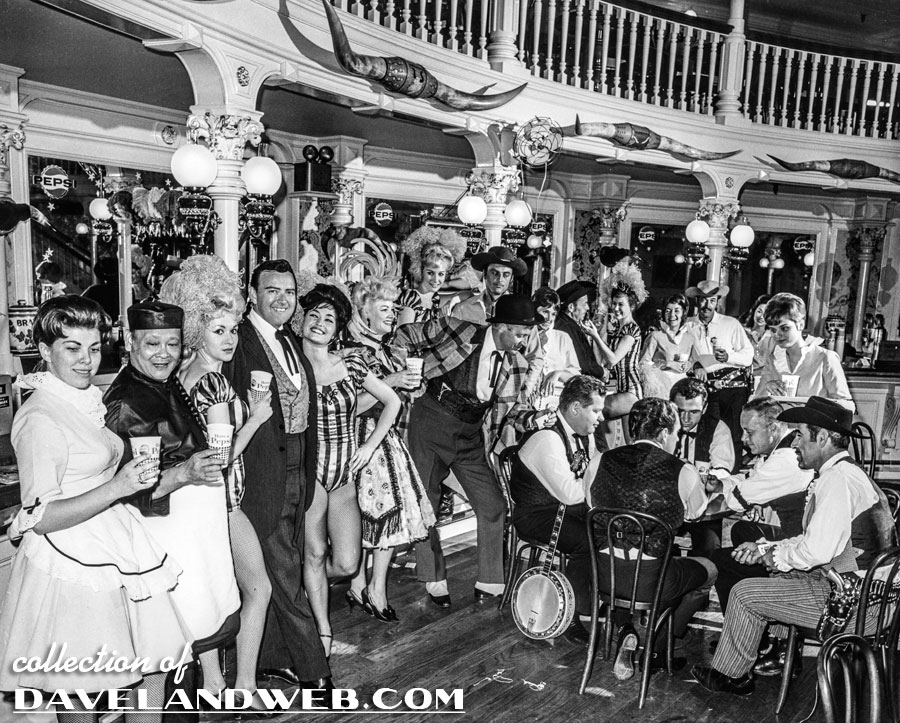
In the 60's, guests could dance to the hip tunes of the Elliot Brothers at Date Night:
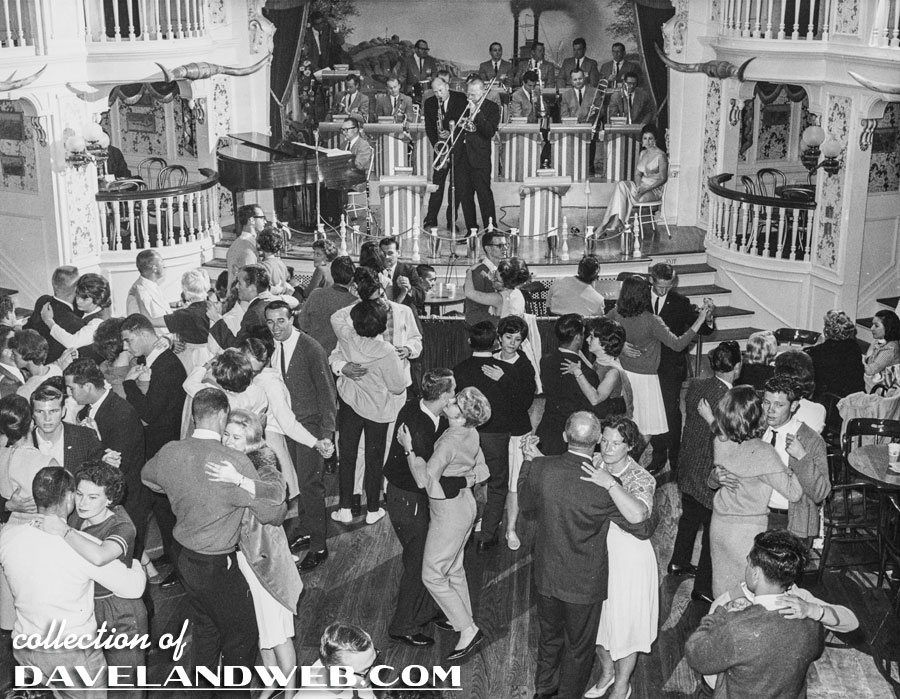
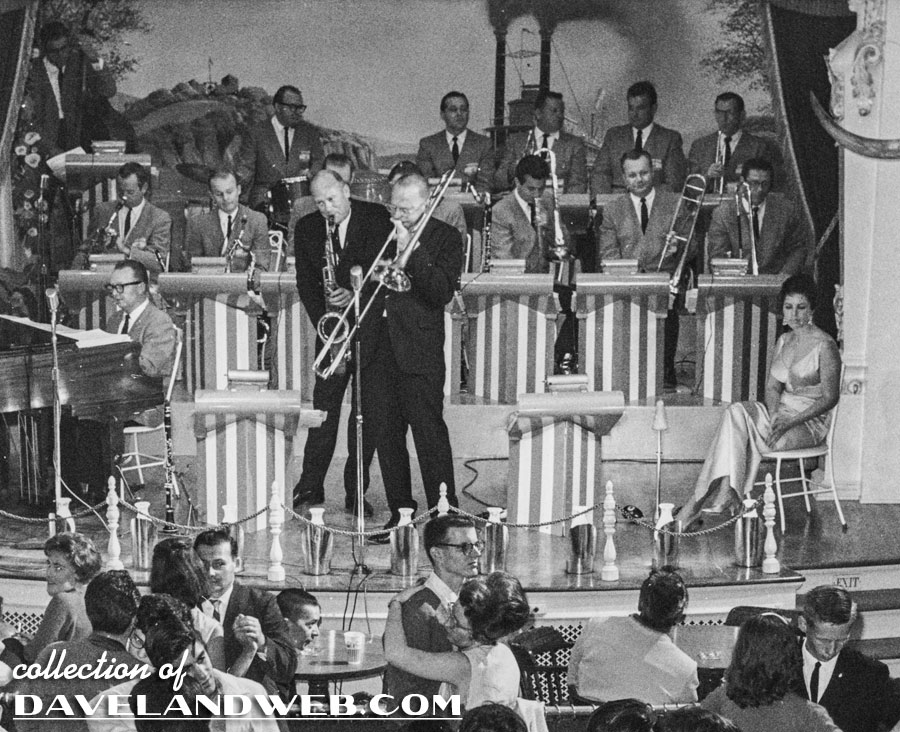
Here's Charlie Barnet, at The Cavalcade of Bands, June 1, 1963
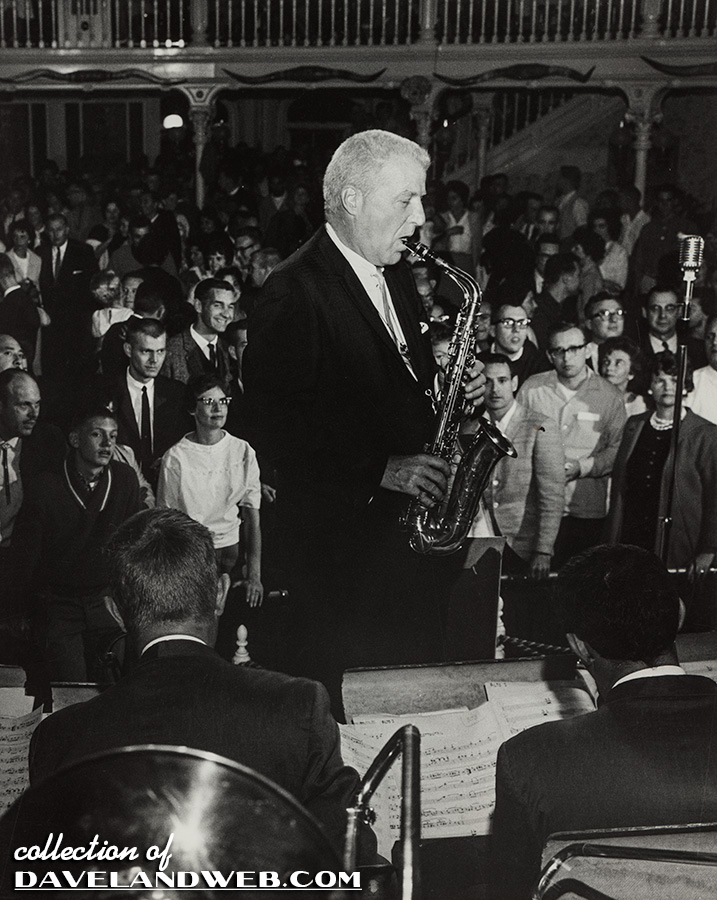
Zooming in to see the music:
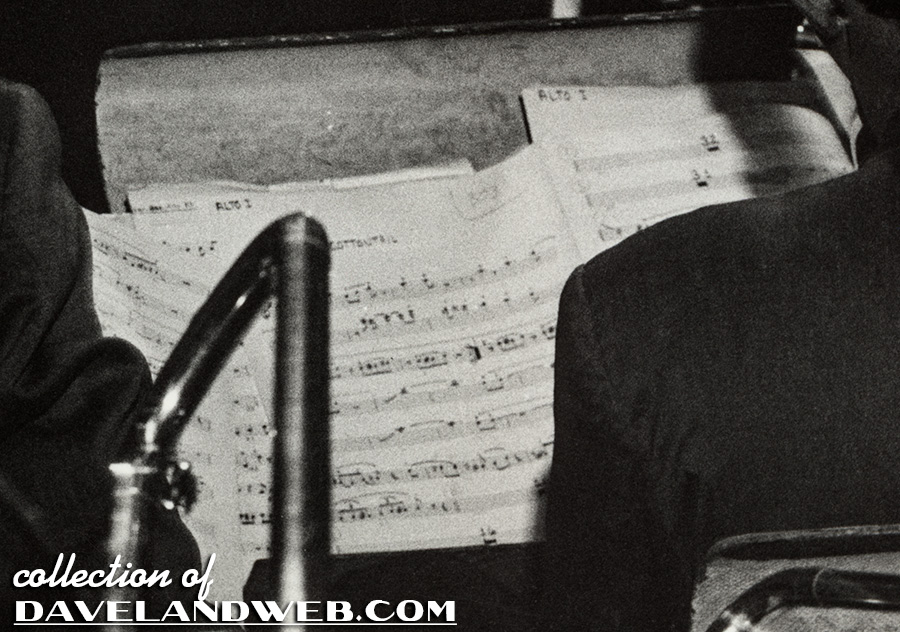
Former Cast Member Russ "Lucky" Reynolds was kind enough to share some memories he had of working at The Golden Horseshoe:
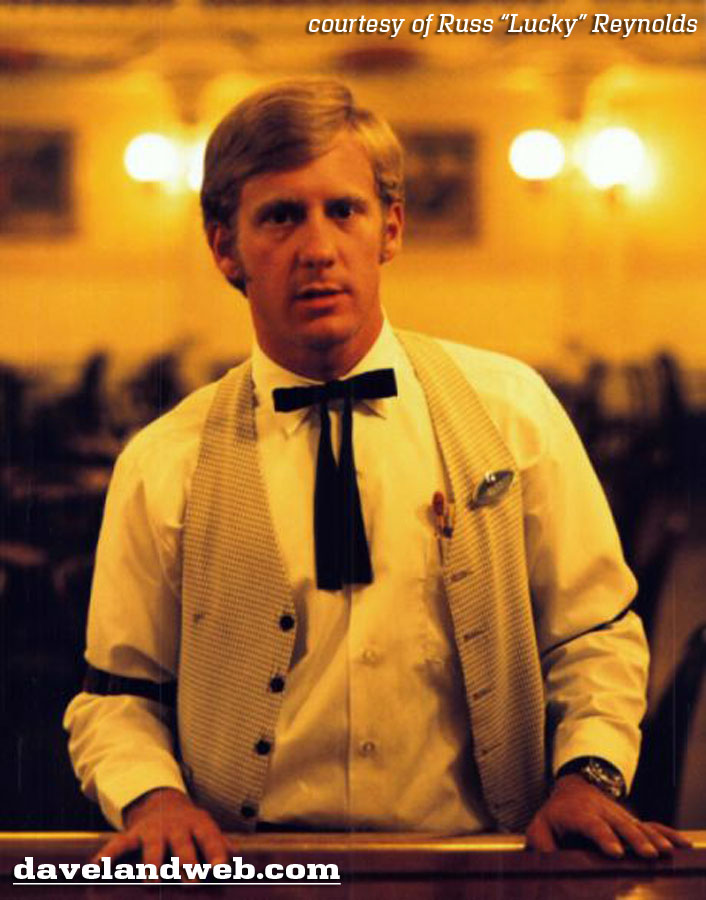 I have nothing but the fondest memories of working at the Horseshoe (1969 to 1974). Disneyland has been a family affair. My wife (high school sweetheart during the Horseshoe years) was Snow White in those days. I used to take off my bow-tie and garters to sneak off to Main Street and watch Cathy in the parade. Years later, our older daughter Kariann worked in Frontierland operations for five years. More recently, our youngest Katie danced in the Parade of Dreams and the Christmas Parade. Now she is a Laker Girl.
I have nothing but the fondest memories of working at the Horseshoe (1969 to 1974). Disneyland has been a family affair. My wife (high school sweetheart during the Horseshoe years) was Snow White in those days. I used to take off my bow-tie and garters to sneak off to Main Street and watch Cathy in the parade. Years later, our older daughter Kariann worked in Frontierland operations for five years. More recently, our youngest Katie danced in the Parade of Dreams and the Christmas Parade. Now she is a Laker Girl.
Back to the ‘Shoe. Wally, Betty and Fulton were still doing the Revue, with Bert as Wally’s sub. Several of the guys I worked with had a crush on one of the dancers (Terry Robinson) – she was a very nice gal. I never got tired of watching that show. At night the entertainment was highlighted by Sonny Hellmer and Banu Gibson doing a Roaring 20’s show. Sonny would chug an entire pitcher of Pepsi every show. Special engagements were common back then. Such stars as Conway Twitty, Xavier Cugat & Charro, Buddy Rich, etc. The Kids of the Kingdom weren’t bad either. Truly, working at the Horseshoe was always fun. I never had a hard time doing my shift. As to the inner workings of the operation, the work was hard because we had to fill the house and serve every guest before the show began. The menu included tuna, beef & cheese and ham & cheese sandwiches (the h & c had great marbled rye bread). The waitresses had the toughest duty by far. There were a lot of breaks, however. While the shoe was on we all retired to the little foreman’s office upstairs. We played a lot of pinochle and poker and quickly bonded into a very close group by virtue of the close quarters and the many breaks during a shift. Yes, there were several weddings between bartenders and waitresses over the years. Now, 40 odd years later, we go back often as season tickets holders. Although we Enjoy Billy Hill & the Hillbillys, they are a far cry from the Revue. Those were the days!
Pepsi was a huge sponsor of The Horsehoe for years, underwriting the expense of the excellent entertainment, etc. at this unique venue. Several years after I left in the 70’s they pulled-out and left the budget in a hole, which was too bad. Walt was right with his belief that the bottom line took care of itself if the vision remained pure.
Thanks for the opportunity for nostalgic memories.
Russ (Lucky) Reynolds
See more vintage & current Disneyland Golden Horseshoe Revue photos on my Golden Horseshoe web page.
